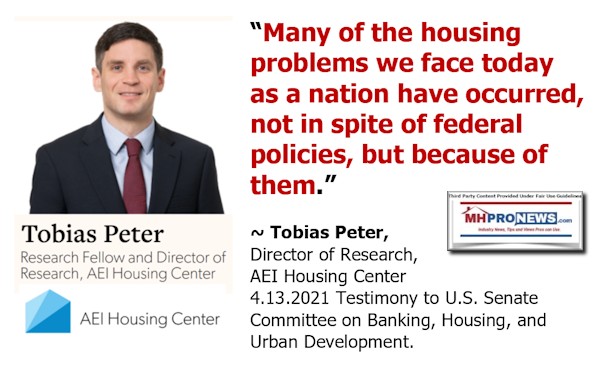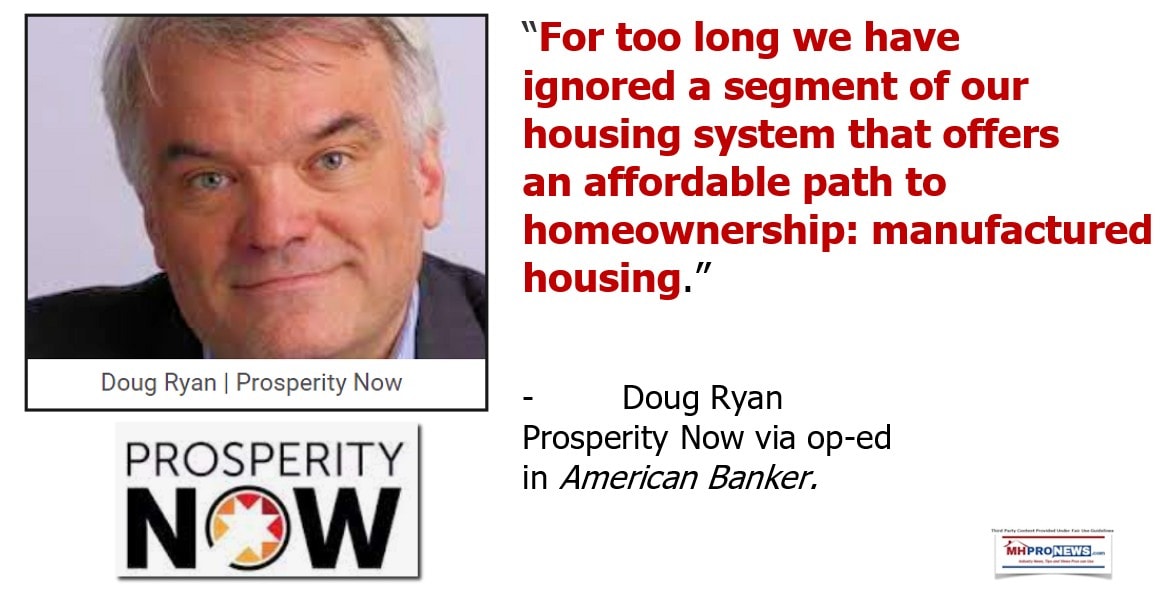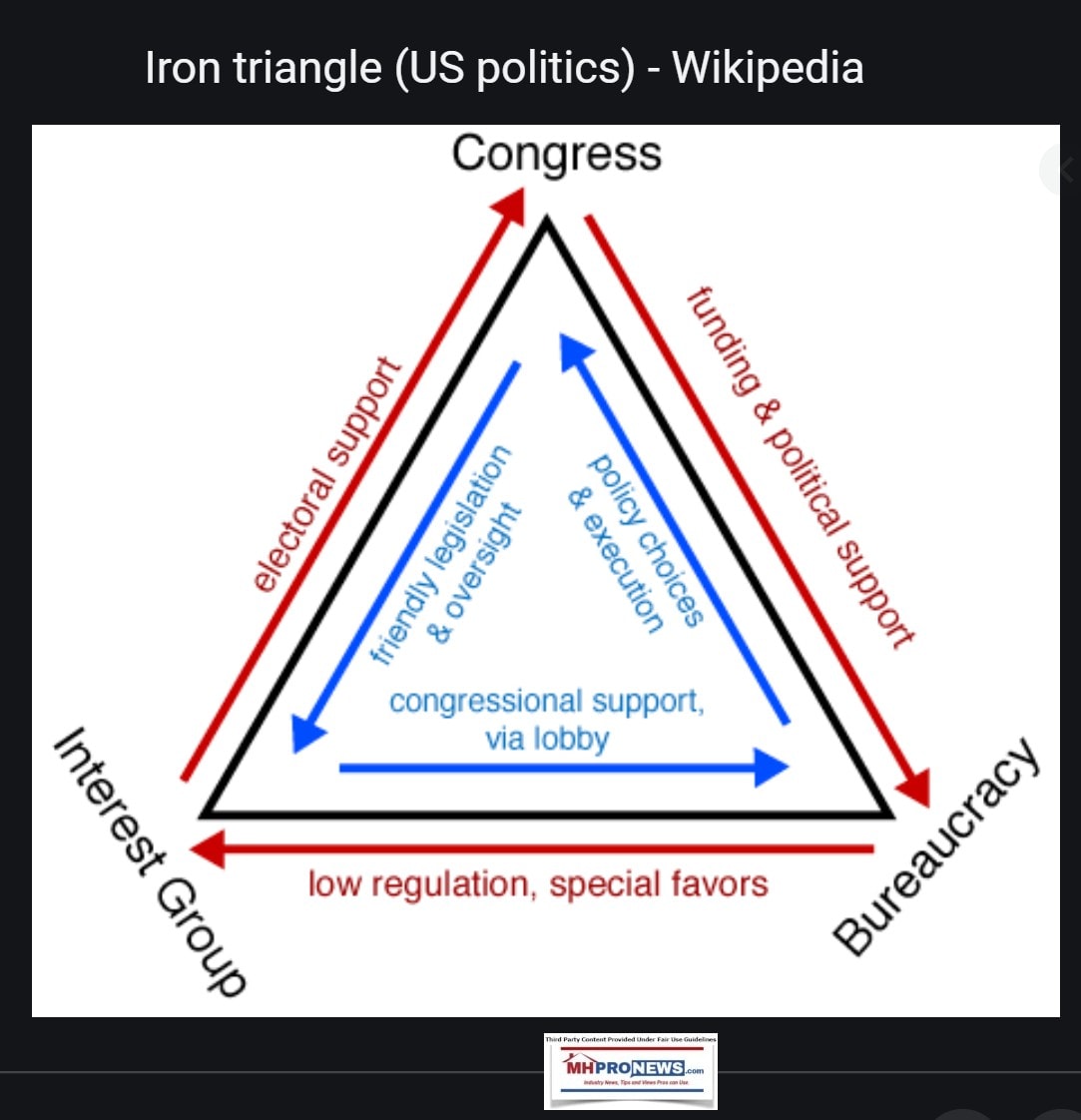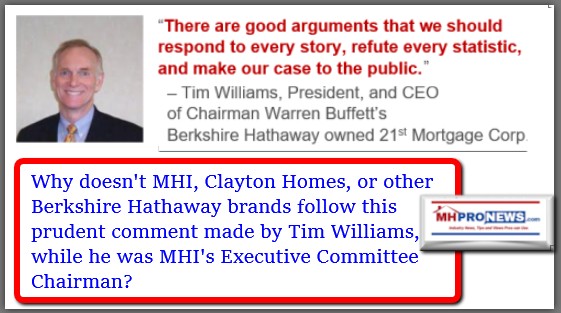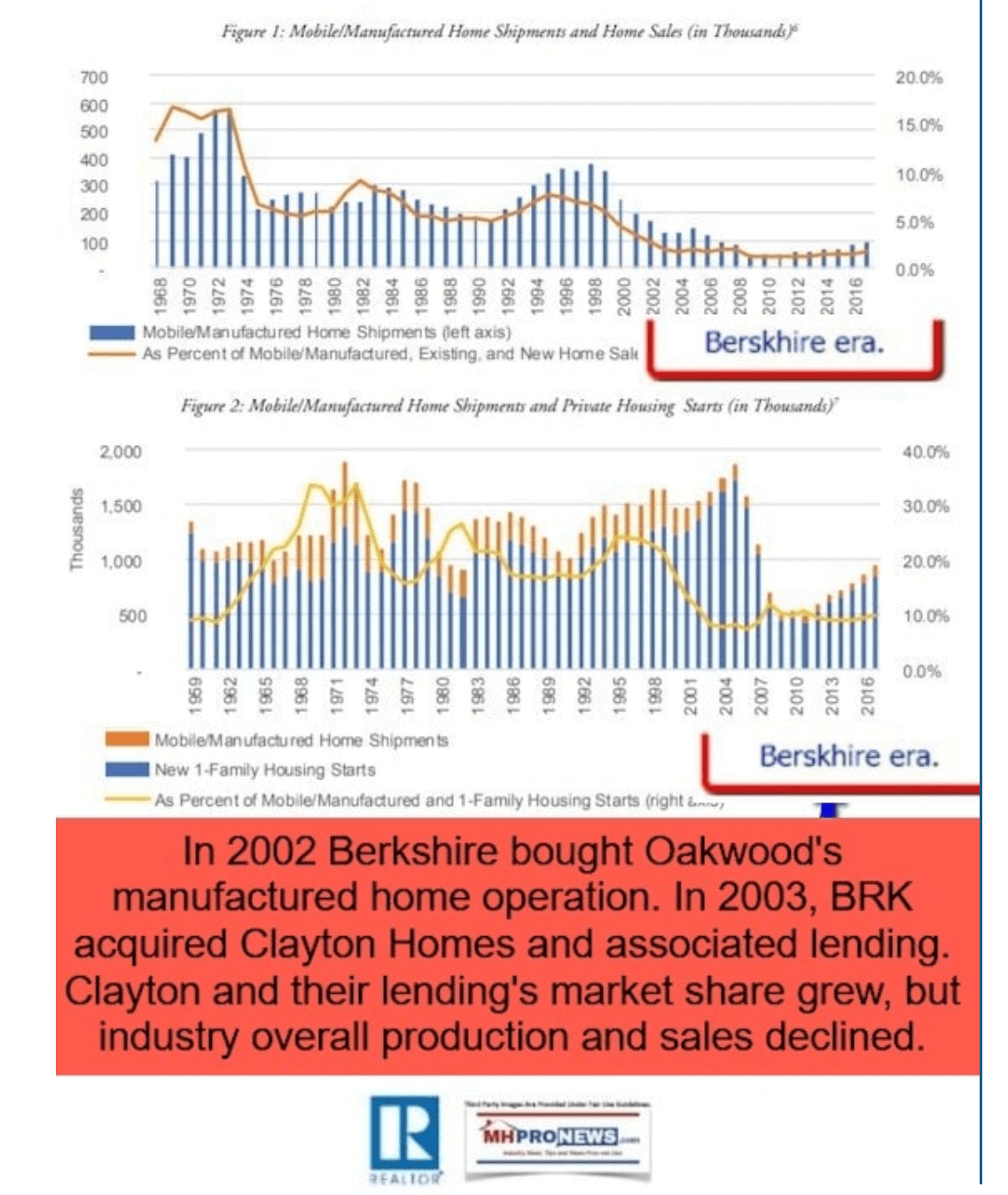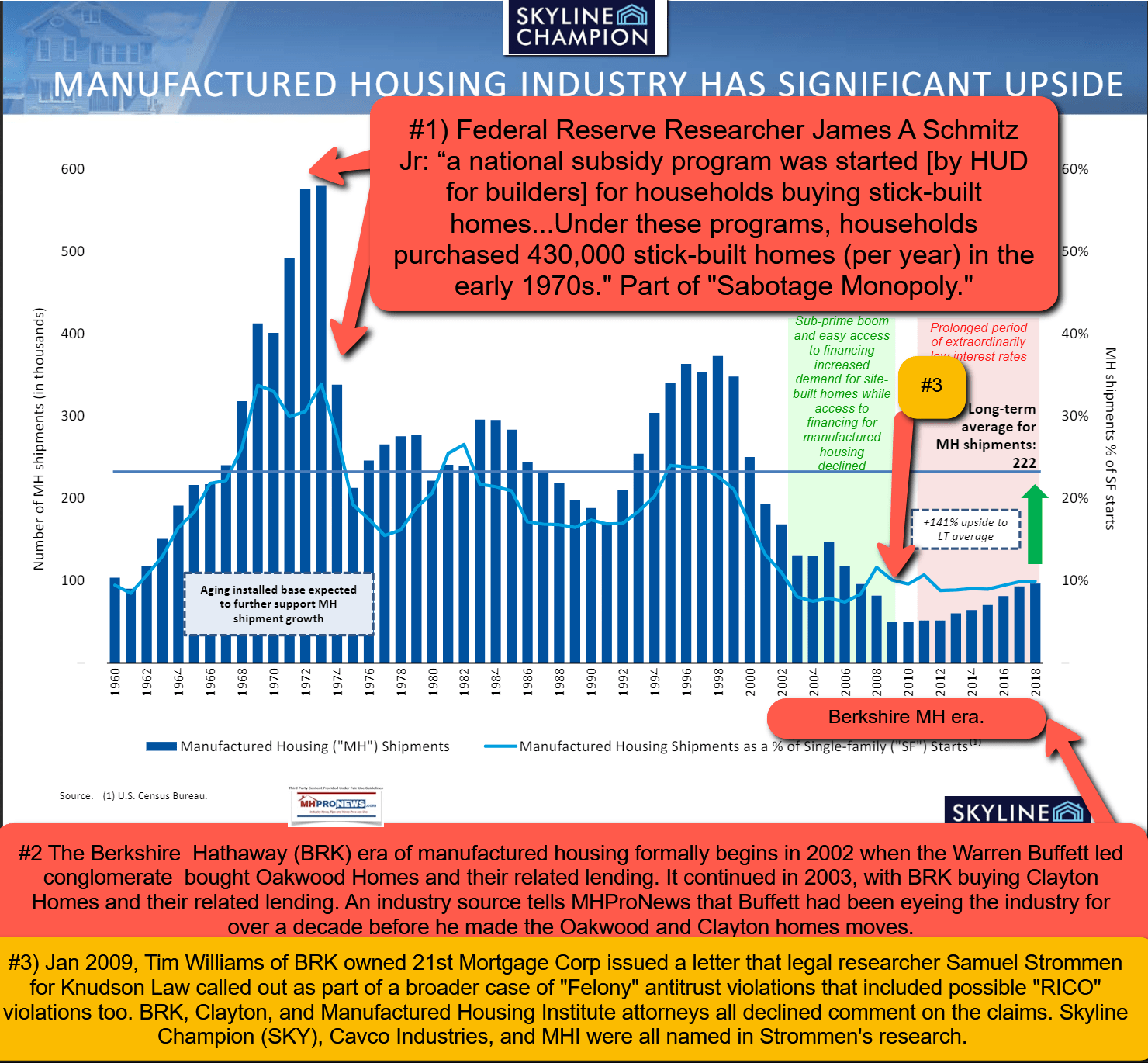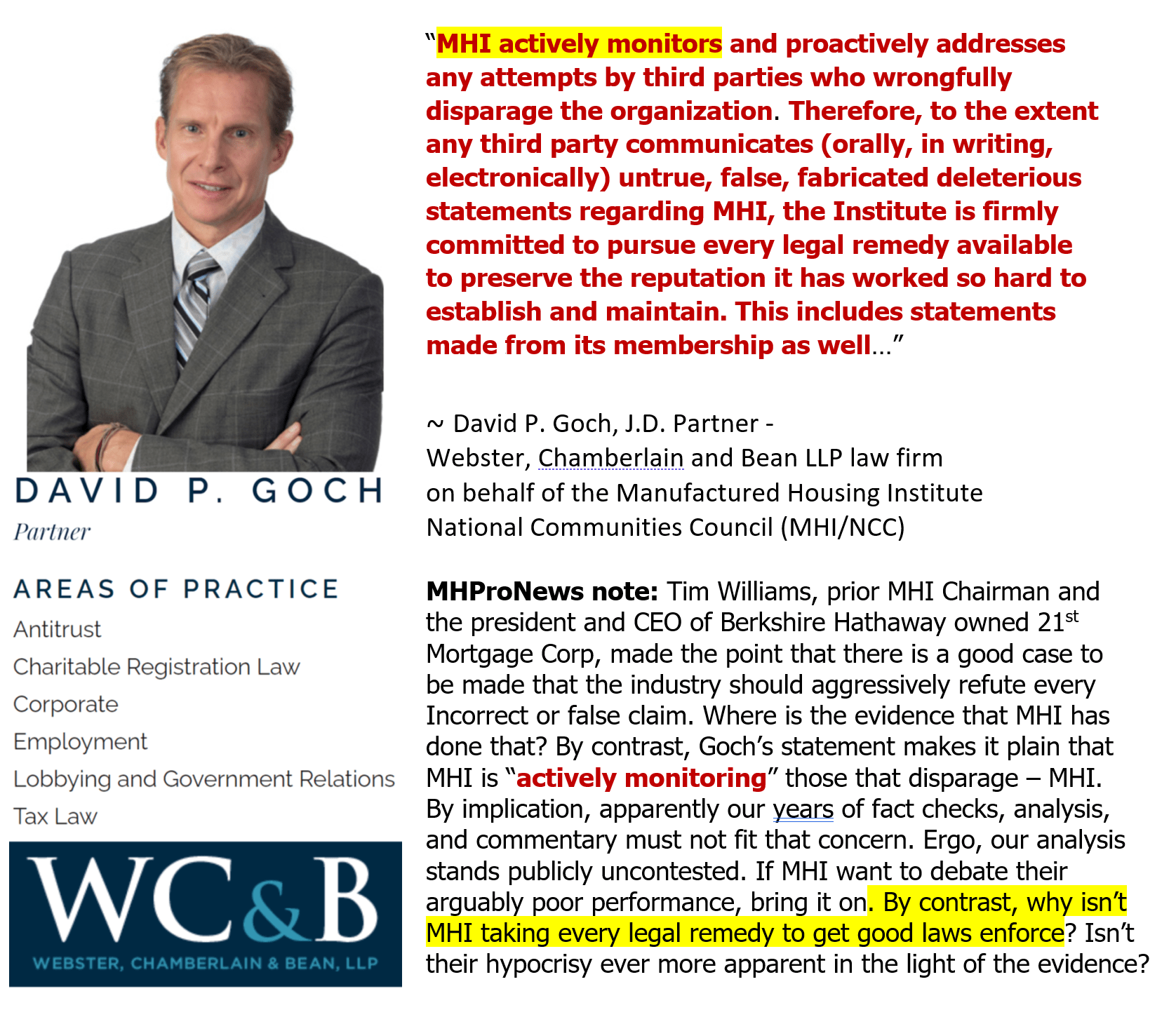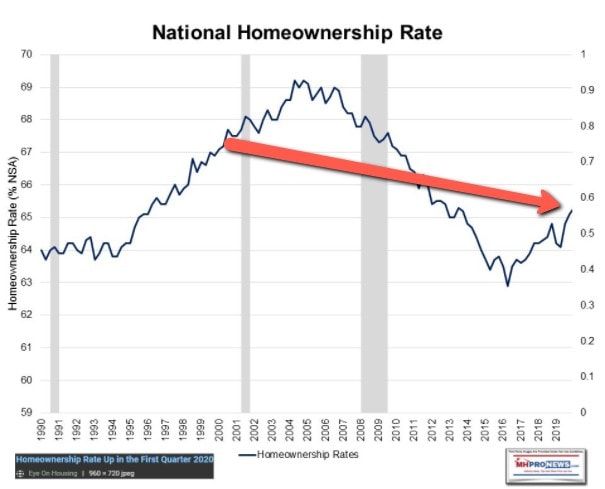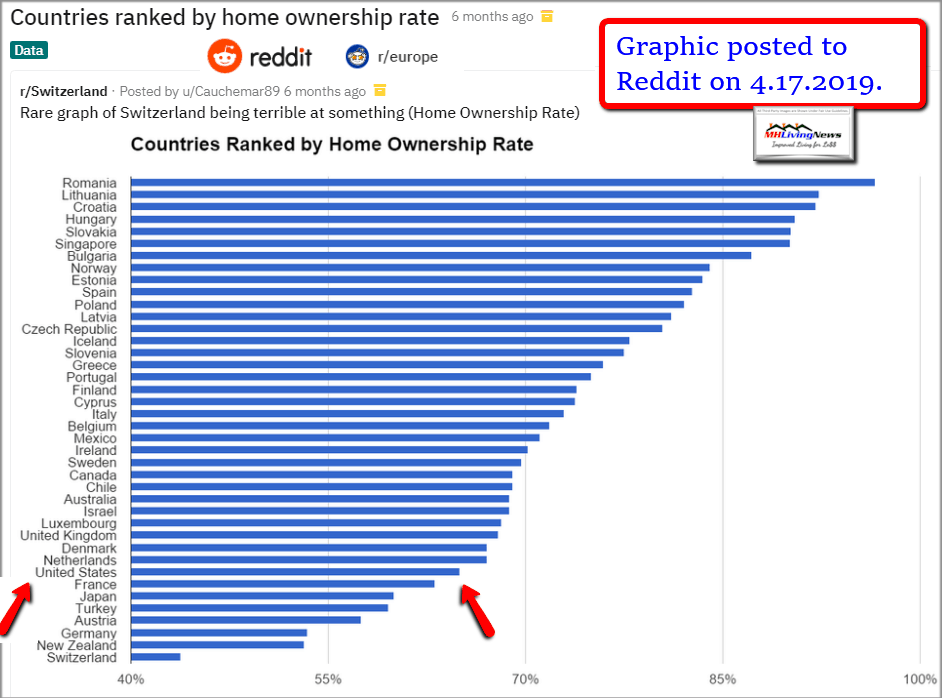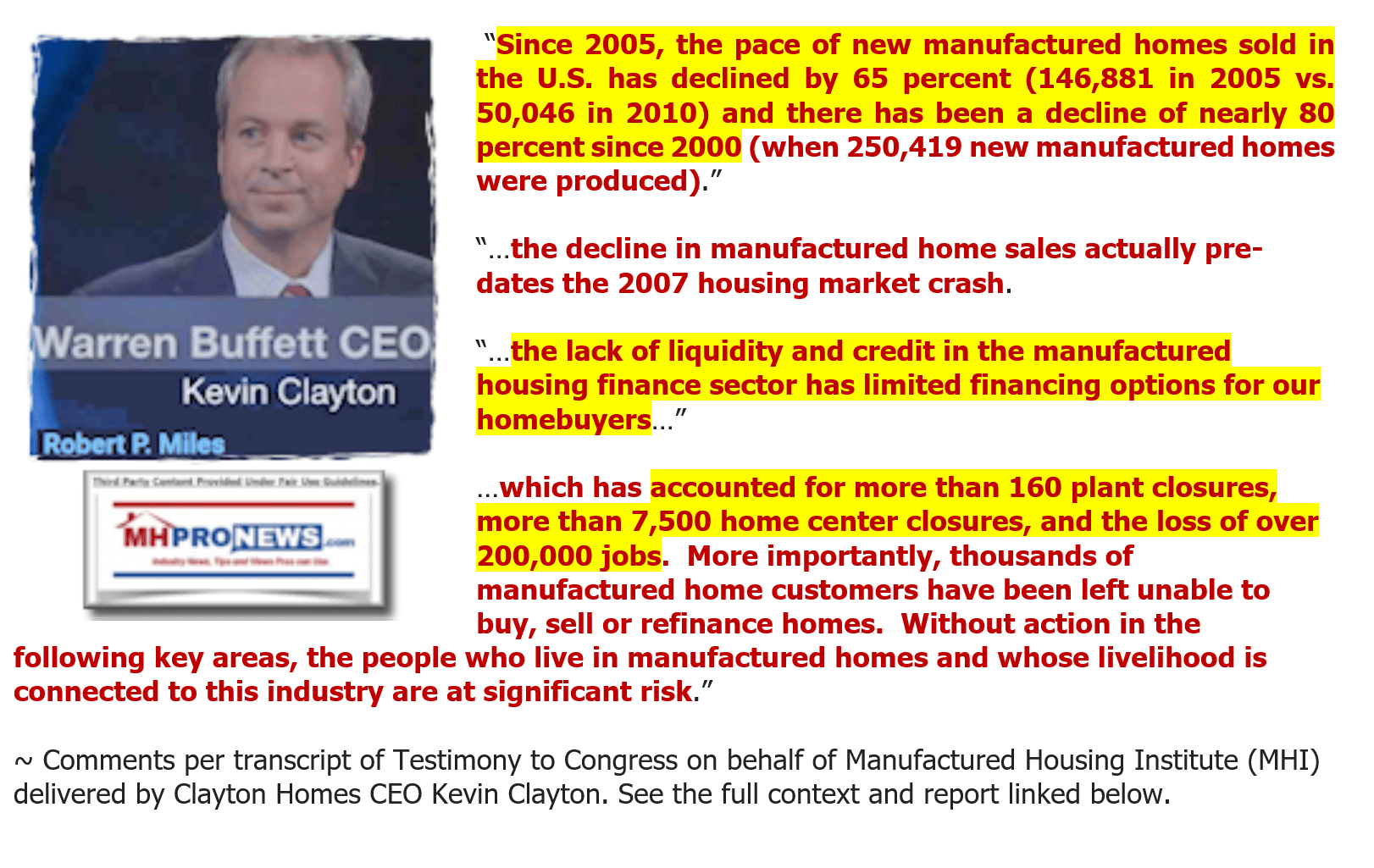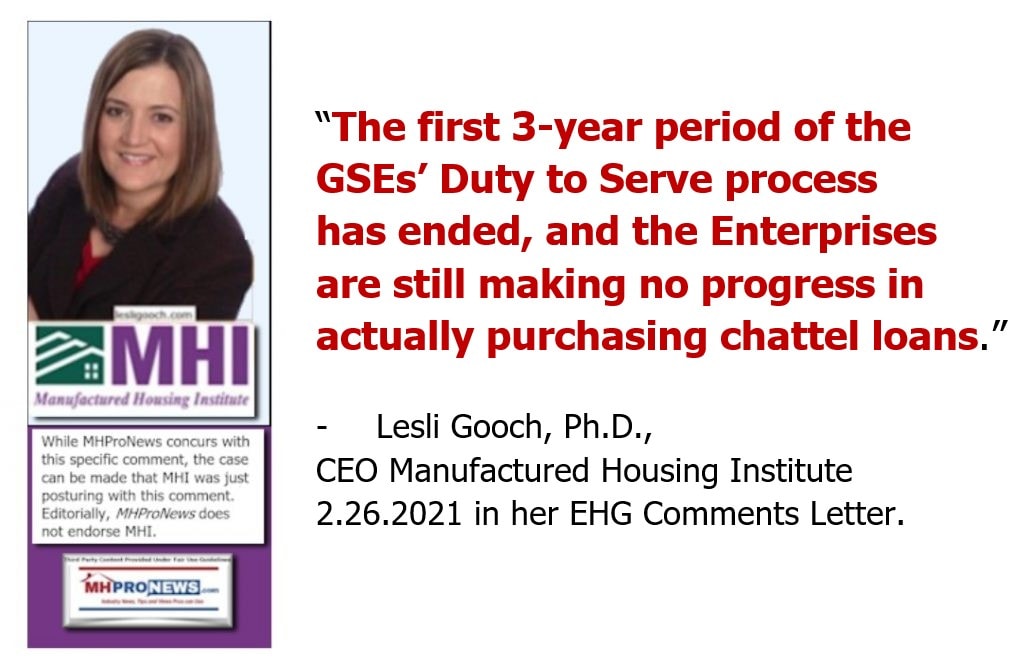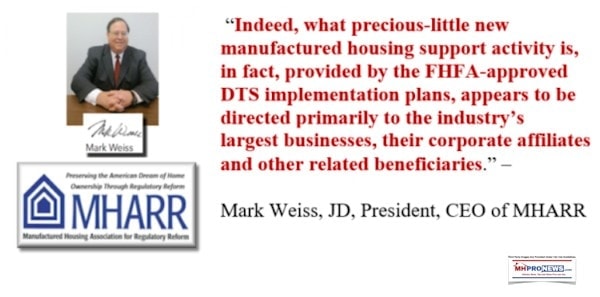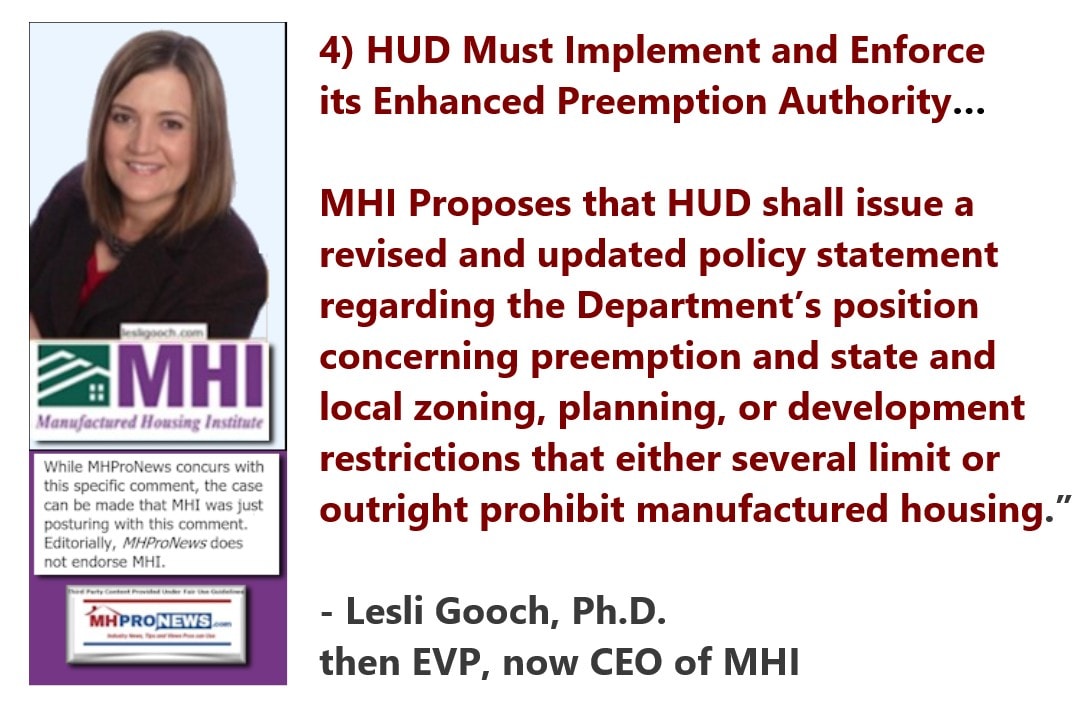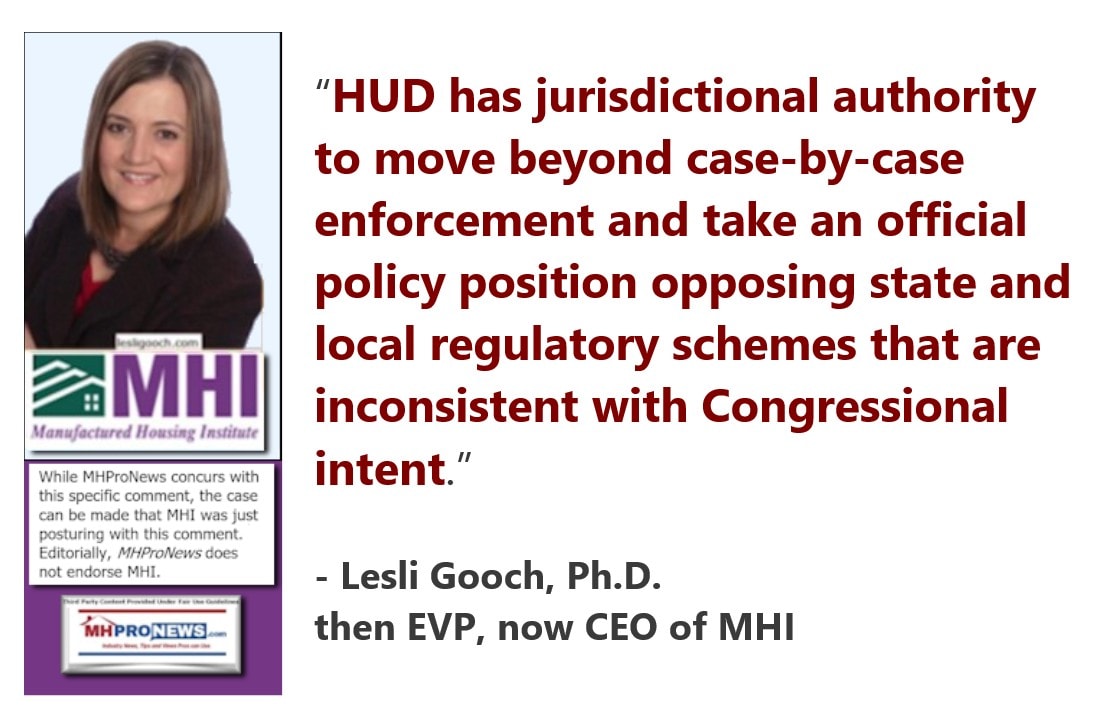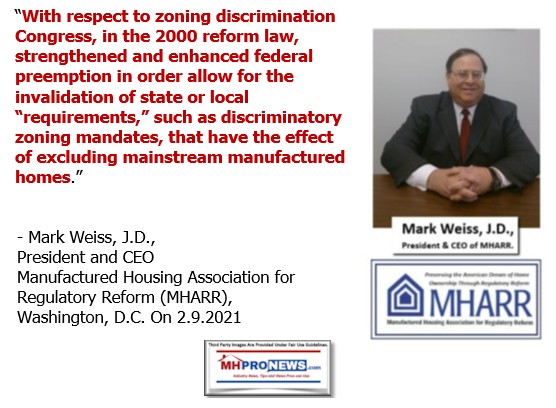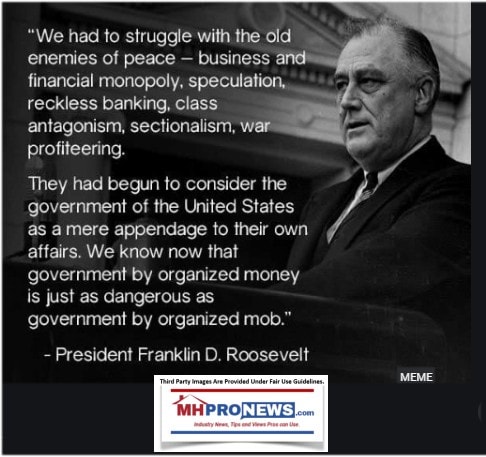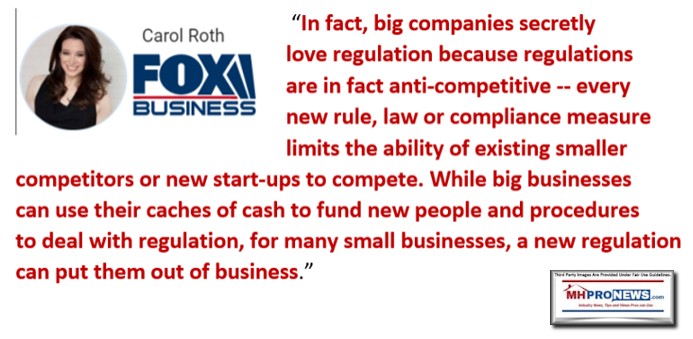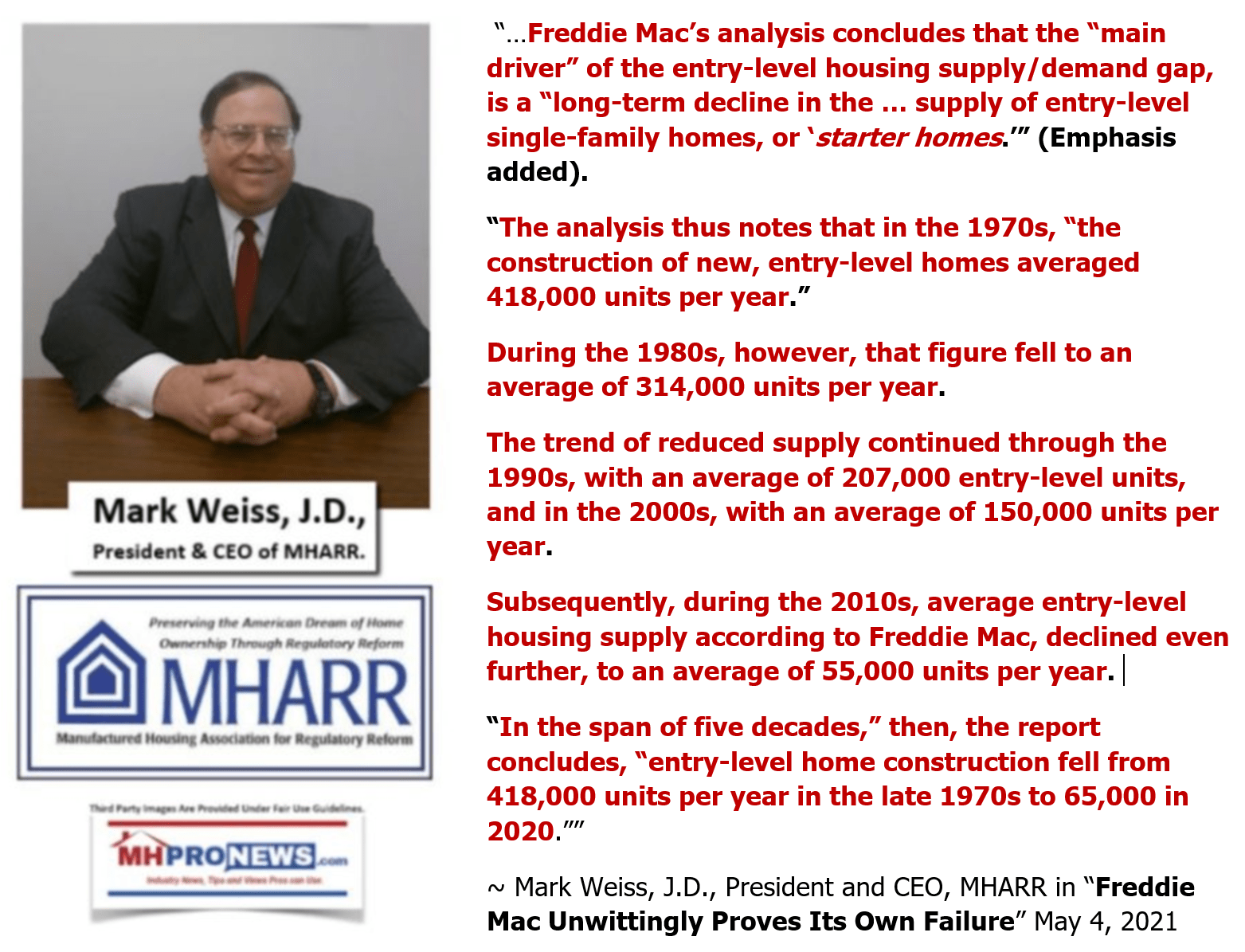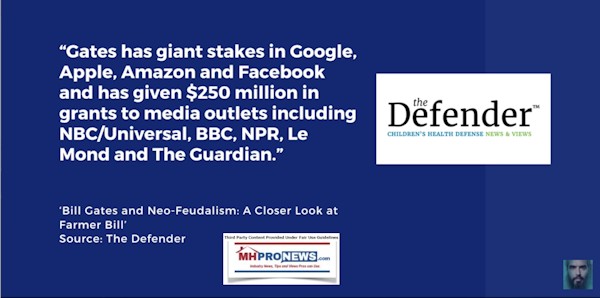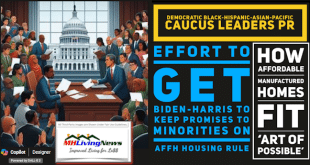When someone wants to understand the lack of affordable housing in the U.S., by reading published studies from a range of sources, a few common facts emerge. The underlying causes of the affordable housing crisis observed by experts and partisans are often similar regardless of which of the two major political parties they may favor. For example, Zoning is a commonly-cited barrier or hurdle. Financing for affordable homes is another. Labor and a patchwork of different local standards makes building a house or developing property slower and more costly. Despite such common cited barriers – and demonstrably evidence-based concerns, there is oddly an apparent lack of understanding by much of the population of theses causes and cures for the affordable housing crisis. Perhaps as important, millions who already own a home do not grasp how a lack of affordable homes hurts themselves and almost everyone, save a limited few.

While there is a dispute as to the question of if the currently “overheated” housing market is a “bubble” or not, there are sober voices that assert that it is a problem that could soon see the ‘bubble’ burst and then existing home prices may slide dramatically. That is only mentioned here, but it can be explored via the report linked below. Because millions may not care as much unless they realize that their future equity is threatened. Rephrased, there are evidence-based reasons why conventional housing owners, renters, and manufactured home owners should all be broadly on the same side of these issues.
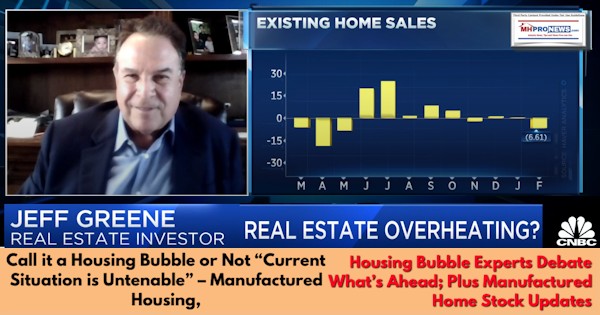
In contrast to the vast majority of Americans who are directly or indirectly impacted by a lack of affordable housing, leaders of and those involved in wealthy corporations are profiting from the status quo. Conventional housing builders of single-family and multifamily housing benefit from this pattern too.
Those fairly limited numbers who have benefited from decades of the same old political promises about the same troubling issues. On the local level, conventional ‘site builders’ are benefiting. Nationally, those beneficiaries tend to be wealthier and be politically-connected millionaires, ‘billionaires, oligarchs, and plutocrats.’ So, there are those who are protected or benefit from the status quo. Meanwhile, wittingly or not, the vast majority is either at risk or demonstrably harmed. To those who recall the housing-finance crisis circa 2008, they know that millions who paid their mortgages on time and ‘did the right things’ nevertheless saw their property values plummet.
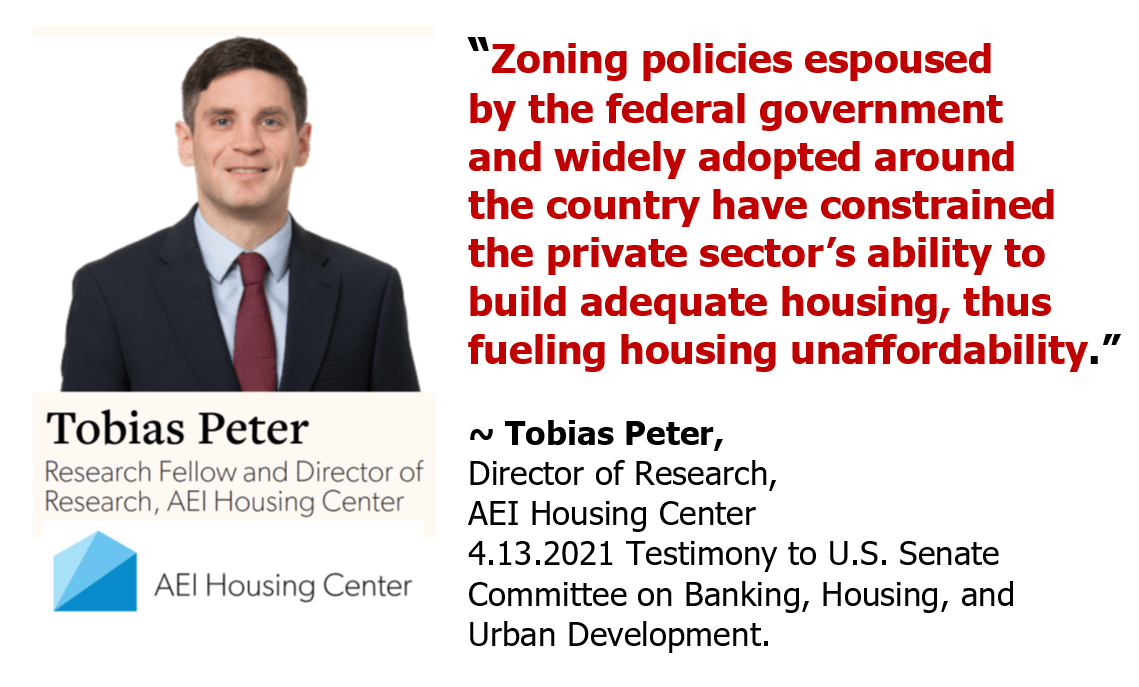
Periodically, under public pressure, politicians come out and make this or that promise to fix affordable housing. Yet years later, looking back, little has changed. At various times, the evidence and trends indicate that the lack of affordable housing may be worse than before the promised ‘cure.’
- What is surprising to many is that the definitive solutions for the affordable housing crisis were passed into law decades ago.
- Furthermore, the financing for affordable homes was also addressed years ago. Those bills were enacted by widely bipartisan margins. One of those bills, for example, was signed by a Democratic president and another by a Republican one.
That noted, when those federally-legislated fixes are examined, those laws have oddly been marginalized and manipulated. Once again, a favored few that include, but are not limited to, conventional builders and investors in rental housing have benefited. Meanwhile, most were left out, are at risk of a repeat of 2008, or have already been demonstrably harmed.
The so-called political establishment that has often dominated the two major parties repeats that pattern of studies and promises to fix the shortage as needed. It is no surprise when politicos are getting campaign contributions from those who benefit from the status quo.
This report and analysis will examine key facts developed by federal and other sources that span the left-right political divide. This will do that by providing the supporting evidence to the claims noted above and herein below. Meaning, there should be little, if any, room for doubt about the underlying cause of the affordable housing crisis among reasonable people.

As important, this report will illustrate that the solution to the affordable housing crisis is available right now. That is because the laws needed already exist. Congress passed federal legislation years ago. Once it is clear that the root causes are known, it should be obvious that there is no need for a new commission or new research to examine the issues. It should also become clear that there is no need for new legislation.
Put differently, the possible excuses for more delays – when examined in the light of the laws and facts – do not exist.

Beyond the background, what is needed is an understanding of those existing laws passed by Democrats and Republicans working together and how those laws can be swiftly applied.
Also useful, perhaps even necessary, are clear insights as to how it is possible that good laws have been thwarted for so long. That will also be examined herein, again, by citing the sources that have studied the matter based upon objective evidence.




The facts and related evidence that will be provided in this article should make it clear to skeptics willing to examine the facts that indicates how a manipulated system demonstrably harms the majority of Americans.
Once those points are understood – and how a ‘rigged’ and manipulated system has enriched a few at great harm to most Americans – there will be a look at other existing laws can be applied so those who have rigged the system can be brought to justice.
Because the case can be made that numerous laws have been broken.

To that end, what follows in this report and analysis can be summed up like this.
- Facts, statements, and results that will include comments from President Donald J. Trump (R) and current White House resident, Joseph R. “Joe” Biden, Jr. (D).
- Evidence from Presidents William “Bill” Clinton (D) and George W. Bush (R) terms of office, among other presidential administrations.
- Each of their respective administration’s research will support the summary above.
- Other evidence by independent researchers on these issues that will be cited later herein. They will broadly support the federal research. But some of those explored herein go beyond that by looking at third-party researchers that have explored what they assert is corruption that is often illegal in nature.
- After those foundational points of evidence are presented, this report and analysis will then take the additional step of revealing proven solutions. Those solutions were based on studies and reports that documented the most widely established, yet oddly misunderstood, form of affordable housing. That would be modern HUD-Code manufactured homes, which third-party research reveals defies the bulk of the common misconceptions and stereotypes about manufactured housing.
- Research during the Obama-Biden years documents that conventional housing owners are not negatively impacted by the presence of manufactured homes.
- Other research cited herein by Trulia also reveals that single-family homes are not harmed by having nearby affordable housing.
- Indeed, the report noted above and linked here suggests that conventional housing owners should want more affordable homes or risk the housing bubble bursting and dragging their values down with it, as occurred circa 2008.
- Not to be overlooked is the point that taxpayers are de facto paying for programs that could be reduced over time if more Americans become less dependent on subsidized housing.
None of these bullets are based upon mere conjecture or speculation. Each of the cited sources will be provided, so that others can confirm these evidence-based assertions.
- While certain elements of analysis and commentary could – and should – be debated, the case will be made that that our expert insights are also evidence-based and merely common-sense applications of the facts and laws involved.

Info from HUD and Federal Sources – First During the Trump, Bush, Clinton, Obama-Biden Administrations, plus More
With that foundation, let’s jump back in time to June 25, 2019. Keep in mind that statements by political leaders of any party are routinely drafted by staff. They might be tweaked by a given president, other elected officials, and/or appointed agency executive. But the research and related facts are often produced by career people who may have served for years or decades under both Democratic and Republican leadership.
Also, while this will start with the controversial President Donald J. Trump, we will demonstrate that sometimes quite similar facts and statements were made by prior administrations of both major parties. All of that will be illustrated herein which will routinely include the attached and/or linked documentation.
That is part of the frustrating pattern that has yielded the seemingly implausible status quo. As noted, none of these issues are new. Some of the proposals made during the Trump years are similar to prior plans. That is because – as noted above – the underlying issues are well known by those who have studied these concerns.
That said, here are some pull quotes from the 6.25.2019 presidential executive order on “Tearing Down Red Tape in Order to Build More Affordable Housing.”
The pull-quotes are not necessarily in the order found in the original Trump executive order (EO).

CUTTING EXCESSIVE COSTS TO SPUR CONSTRUCTION: Regulations are creating excessive costs that are holding back the development of needed affordable housing.
- Many of the markets with the most severe shortages in affordable housing have the most restrictive State and local regulatory barriers to development.
- More than 25% of the cost of a new home is the direct result of Federal, State, and local regulations, with the price tag even reaching up to 42% for some new multifamily construction.
- Costly regulations have contributed to a shortage of affordable homes.
- Census Bureau data shows that from 2010 to 2016, only seven homes were built for every 10 households formed.
- High housing prices are a primary determinant of homelessness, and research has directly linked more stringent housing market regulation to higher homelessness rates.
HELPING AMERICANS FIND A HOME: President Trump is building on efforts his Administration has taken to lift up all Americans and make it easier for them to find a home.
- Earlier this year, President Trump signed a memorandum to initiate needed reforms to our housing finance system.
- The Trump Administration is committed to enabling Americans to access Federal housing programs that help them finance the purchase of their first home.
- In 2018, HUD launched a campaign to encourage more landlords to participate in the Housing Voucher Program, the country’s largest rental subsidy program.” … ##
Let’s note again that there were more bullets than those shown above.
When thoughtful and detail-minded readers look carefully, several of the points in our introduction were already made in that bullet list shown by the Trump Administration.
But to illustrate that these issues are not new, and that the solutions to the affordable housing crisis are well-known, let’s jump back 14 years to President George W. Bush (R) administration. Because a U.S. Department of Housing and Urban Development (HUD) issued report was published then on regulatory barriers to affordable housing.
That Bush-era report insightfully noted the following.
“Regulatory barriers were exposed as a problem 13 years ago, when the Advisory Commission on Regulatory Barriers to Affordable Housing submitted its report, “Not In My Back Yard”: Removing Barriers to Affordable Housing.” That is found on page iv of the HUD report entitled: “Why Not In Our Community?” Removing Barriers to Affordable Housing An Update to the Report of the Advisory Commission on Regulatory Barriers to Affordable Housing.”
The language and issues were similar to what was stated during the Trump Administration years.
Perhaps as or more important, between Trump (45) and Bush (43) there were 8 years of then-President Barack Obama and Vice President Joseph R. “Joe” Biden.
Additionally, take note of the fact that the “13 years ago” cited by that 2005 era HUD report places it during the William Jefferson “Bill” Clinton (D) administration.
That 2005 Bush-era HUD report frankly said: “Despite some areas of progress, the Advisory Commission’s finding that exclusionary, discriminatory, or unnecessary regulations reduce the availability of affordable housing remains true today.”
Thus, be it Democrats or Republicans in the White House, the problems remained vexingly similar.
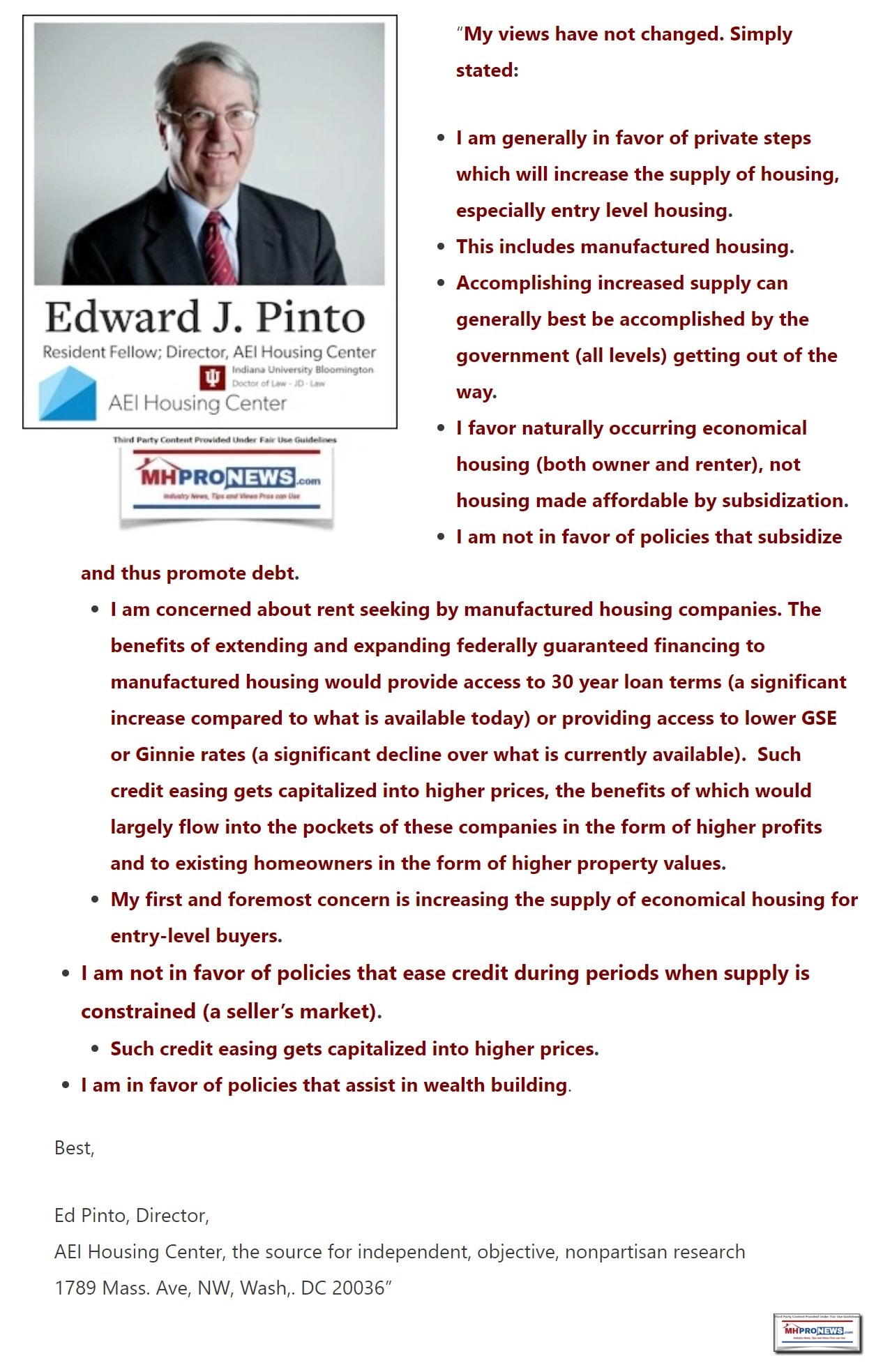


More from HUD’s “Not In My Back Yard”: Removing Barriers to Affordable Housing.”
That 2005 HUD Office of Policy Development and Research (PD&R) report is linked here as a download. As that HUD PD&R document stated, it updated and “…describes recent trends in regulatory barriers to affordable housing, reviews recent efforts by states and local communities to reduce regulatory barriers, and details actions being implemented by the Department to reduce regulatory barriers.”
HUD’s “Not in My Back Yard…” included these next bullets. Compare how similar they are to some of the points made by the Trump Administration some 14 years later.
Section I. Regulatory Barriers to Affordable Housing Persist
- Evidence That Regulatory Barriers Increase Housing Costs
- Trends in the Regulatory Environment Affecting Housing Development
- Section II. Efforts to Solve Barrier Problems at the State and Local Level
- State Efforts to Reduce Regulatory Barriers
- Local Efforts to Reduce Regulatory Barriers
- Section III. HUD’s Commitment to Barrier Removal Efforts
That’s decades of an affordable housing snapshot – during the Clinton-Bush-Obama/Biden-Trump, years summed up on the affordable housing issue – in about 2300 words. It relies upon federal data. That data from one term of office, Democratic or Republican, changed only modestly, as that 2005 HUD documented admitted. According to Capitalize My Title: “2,300 words will take about 7.7 minutes to read for the average reader.”
Those federal sources will be buttressed herein by nonprofit research that comes from outside of manufactured housing in this report and analysis.
Before proceeding, let that sink in. About 2300 words – under 10 minutes of reading – can summarize decades of research that spans both major parties and it routinely reveals the same issues as the causes for the affordable housing crisis.
That said, when you dig deeper into the “Not In My Back Yard”: Removing Barriers to Affordable Housing,” you see the startling statement that that these issues have existed since the 1960s.
Here is what it said: “since as early as 1967, [HUD and public officials] have addressed the issue of regulatory barriers, the first time identified regulatory reform as a necessary component of any overall national housing policy.”
Now, let that sink statement sink in.
Some 54 years later, from 1967 to 2021, the same tread-worn topics have been discussed time and again. If that is not an indication of disfunction and/or corruption in affordable housing policy, what is?
As important, when listening to current public officials talking about the same issues and promising a repackaged version of what was promised over half a century ago, keep this 50+ year pattern in mind. Why? Because political officials and their appointees often benefit through the “Iron Triangle” when a problem is not solved. It is logically a type of job security for public officials not to cure what they are hired to oversee.
Furthermore, as evidence further below will reflect, decades of the status quo has benefited a connected few while it harmed tens of millions. The roller coaster of rising and falling conventional housing values is directly tied to these issues of supply, demand, and financing.
Now, let’s return to that 2005 HUD PD&R. How much did those regulatory barriers cost American-housing seekers? That report gave these examples:
One study found that excessive regulation drove up the cost of a new home in New Jersey by as much as 35 percent.
Another study determined that the price of newly-built homes in New York City would decline by as much as 25 percent if the city reduced regulatory barriers.
So, those 2005 instances cited similar claims to what was published 14 years later during the Trump Administration. Meaning once more, those facts were nothing new. Before someone imagines or imputes a partisan implication, please note that between the Bush 43 and Trump 45 administrations, there was President Barack H. Obama (D- and President and the United States = POTUS) with his then Vice President Joe Biden.
The facts reveal that this issue of affordable housing is not partisan at all. The various presidents from each major party come and go. Research is performed. Promises are made. Yet, the problems remain pretty much the same. The same special interests continue to benefit.

That said, the words “manufactured homes” in HUD’s “Not In My Back Yard” appeared as is shown below. The highlighting was added by MHLivingNews.
Per the 2005 HUD PD&R, “The 1991 Report found that various regulatory barriers—public processes and requirements that significantly impede the development of affordable housing without commensurate health or safety benefits—directly raise development costs in some communities by as much as 35 percent. These regulatory barriers have other significant negative impacts on the country’s ability to meet national housing needs. By constraining overall supply and the market’s ability to respond to demand, housing prices and rents in many markets are inflated. Regulations that restrict market rate and affordable housing options, such as higher density housing, multifamily rental housing, accessory units, and manufactured homes, further exacerbate the problem by limiting or excluding many affordable housing options.”
That 1991 report dated back to George H.W. Bush’s (R) term in office. It illustrates again that through Democratic and Republican terms in office – back and forth since 1991 – the basic problems of affordable housing have persisted.
We will briefly return later to this 2005 report. But that outline tees up this next insight by third-party researchers into what’s gone wrong for decades in affordable housing in general, and manufactured homes more specifically.
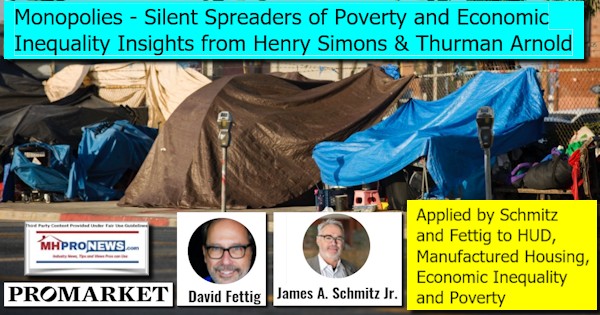
Schmitz and Fettig on Affordable Housing, Conventional Building, HUD, and Manufactured Homes
James A. “Jim” Schmitz Jr. is a senior economist working for the Minneapolis Federal Reserve. He and his colleague and David Fettig, a former vice president of Federal Reserve Bank of Minneapolis, have jointly published research on what they call “sabotaging monopolies.” Keep in mind that while the Federal Reserve is nationally chartered, at its core it is a private banking system. As the St. Louis Federal Reserve website says, “The Federal Reserve Banks are not a part of the federal government, but they exist because of an act of Congress.” That same post by the St. Louis Fed says: “While the Board of Governors [of the Federal Reserve] is an independent government agency, the Federal Reserve Banks are set up like private corporations. Member banks hold stock in the Federal Reserve Banks and earn dividends.”
So, the research by Schmitz and Fettig and others involved with the Fed should not be seen as ‘federal’ as much as a third-party look at the facts. Also, these men are sober professionals who cite their evidence. They are not ‘conspiracy theorists.’ Because they cite their sources, that means that others can retrace their steps and see if they come to the same conclusions.
Schmitz and Fettig get specific in looking at how affordable manufactured homes have been “sabotaged” by what they claim is a combination of HUD, builders, and industry trade organization interference.
They specifically name the National Association of Home Builders (NAHB). As our sister site has noted, Schmitz and his colleagues have said that their reports are interim. They could frankly periodically use a correction on terminology, as they sometimes refer to ‘modular homes’ when they mean HUD-Code manufactured homes. But in fairness, they also correctly use the manufactured home terminology at other times.
Perhaps in their upcoming research into these issues, Schmitz and Fettig should consider the notion that not only NAHB, but how other nonprofit trade groups such as the Manufactured Housing Institute (MHI – as odd as that may sound at first) are involved in this ‘colluding’ or sabotaging the manufactured home industry. Because yet another third-party researcher noted herein, beyond the linked reports, there is evidence from MHI member companies that will be cited herein made just such an evidence-based allegation.
That said, Schmitz, Fettig, and other colleagues who have been periodically involved in or commented on their research have said, factory home building – using manufactured homes as the example – are the logical development for home building. They says it is by “sabotaging” manufactured homebuilding that they say housing costs have been kept artificially high, and why there is a shortage of millions of needed homes.
Citing their evidence, Schmitz and Fettig stated that “…monopolies are concentrations of power formed by groups to enrich members, typically through illegal means. One method used by monopolists is to sabotage substitutes for the monopoly’s goods, typically low-cost substitutes that the poor would purchase. This leads to increased poverty. But since the sabotage disproportionately harms the poor, it also increases inequality. And today’s sabotage often goes unnoticed.”
Before going further, this pull quote should be highlighted. “As for the harm inflicted by today’s monopolies, let’s begin with the most important good purchased by Americans: Housing. Today, the vast majority of US housing is produced using methods that have been around for centuries. It’s often called stick-built construction, a highly labor intensive method of making houses. There is, of course, a much more efficient way to produce housing, a low-cost substitute: factory production of homes.”
Schmitz and his colleagues underscore a similar point made some years ago by this writer here on MHLivingNews and on our MHProNews sister site. Namely, that much of what we have today comes from a factory. Cars. Computers. Clothing. Cell or smart phones. So, their statement above illustrates and verifies this quotation.
Which makes thinking people wonder. How is it possible that cars, computers, or aircraft made in a factory are accepted as having reasonable quality, when factory-built homes are imagined not to have durable or quality features? Restated, it should be obvious that when so much comes from a production center, that having housing come from a production center is logical too.
That brief aside is made to support the points the research by Schmitz and Fettig have reported. “Sabotage” and often “illegal” collusion explains, they say, how an obvious option has been obscured and harmed to the detriment of most. Among them are 111 million Americans living in U.S. rentals, per the Apartment List.
“Monopolies Inflict Great Harm on Low- and Middle-Income Americans.” – Harm Caused by Monopolistic Practices “In All Its Forms”
Schmitz, Fettig, and others cited research entitled “Monopolies Inflict Great Harm on Low- and Middle-Income Americans.” Their study peers into harms caused by monopolies that go into arenas that have nothing to do with housing, such as access to legal services or dental care.
Let’s mention as a teaser that several of their concerns about the harm caused by various forms of monopolization or consolidation – and how that limits competition and harms employees and smaller businesses – are confirmed by a recent White House statement made by Joe Biden. More on Biden’s fascinating statements later.
According to Schmitz and Fettig, “There was a brief period, in fact, when US factory production flourished. Factory production of homes soared during the 1960s, reaching 60 percent of single-family production by early 1970, threatening the very existence of traditional builders, especially those constructing smaller houses purchased by lower-income Americans. In response, monopolies of stick-builders, including the National Association of Home Builders (NAHB) and the Department of Housing and Urban Development (HUD), developed extensive weapons to sabotage and harm factory producers of houses.”
Their next statement illustrates their claim of “sabotaging monopolies.”
“NAHB and HUD strangled the production of factory homes. Production collapsed in the 1970s. Figure 1 shows the shipments of manufactured homes in the United States from 1947-2019. These homes represent a major part of factory-built homes in the United States each year. The surge in production during the 1960s, and its subsequent collapse in the 1970s, is evident. The effect of the collapse on poor households was devastating and remains so today, as affordable housing tops the list of economic issues facing lower-income Americans,” said their report.
“Moreover, through deceit and misinformation, this monopoly sabotage of factory production [of manufactured homes] has been covered up, so that this history is unknown today. Monopolies have silently spread their harm.”

As an insider who has served on a board of directors of a Warren Buffett-funded nonprofit, actor Danny Glover has said something that illustrates that assertion by Schmitz and Fettig. Said Glover almost a decade ago it: “It is not only a monopoly of wealth; it is a monopoly of information as well.”
That said, let’s note that it may be a bit of hyperbole by those Federal Reserve researchers to say that this history is “unknown” today. MHLivingNews – and our MHProNews sister site – routinely look at historic evidence in our research, reports, analysis, and commentary. That includes statements on some of the same issues that Schmitz and Fettig have reported on. That said, in their favor, it would be fair to say that many – perhaps most – in the factory-built housing profession in general are either ignorant of this history they refer to and/or do not realize how it still matters to them today.
Insights from Engineer Skip Van Zandt and Affordable Housing Veteran Dick Moore
Several items that go into conventional housing also come from a production center, which includes fixtures, shingles, the lumber, roof trusses, and so on. So, why not make the entire house in the factory?
Additionally, since construction materials are going to a building/home site by pickup or other kinds of trucks, why not transport the entire home to a homesite, either in one section or multiple sections?
The reality is that factory building has influenced conventional housing, and conventional housing has influenced factory builders, including manufactured homes and modular housing too. Says who? Engineer Skip Van Zandt, who has experience in manufactured housing but is well-versed in conventional construction too.
Similar points have been made that debunk myths by manufactured home veteran Dick Moore. See the video interview below, which, among other points, debunks the notion that manufactured homes are not resilient in windstorms. As Moore points out, during transport to a homesite, a manufactured home is routinely bucking winds that are roughly equal to a modest tornado.
Thus, the wisdom of building a home indoors, in a controlled environment, instead of outdoors in the elements should be obvious.
Additionally, the waste and lost due to theft, weather, or other factors is also reduced in a production center. The logic of factory building, the more it is objectively considered, the more apparent it becomes.
None of this isn’t new. These facts have been true for decades, as Schmitz, Fettig, numerous federal research projects commissioned by HUD and others have noted. Time and again, the wisdom behind modern manufactured homes, or other forms of factory building, emerges.
What the National Association of Home Builders (NAHB) Says About Housing Barriers
On May 5, 2021, Paul Emrath, Ph.D., in a “Special Study for Housing Economics” for the National Association of Home Builders (NAHB), hardly an ally of manufactured housing, noted the breakdown of what local regulations added to the cost of new construction.
Said NAHB after “surveying builders and developers separately produced a somewhat different breakdown of the regulatory cost, with 10.5 percent of the final house price attributable to regulation during development of the lot, the other 13.3 percent due to regulation during construction of the single family structure.”
Here is a breakdown of some of those costs, per the same NAHB report.

Emrath noted that the cost of regulation has risen dramatically, as the illustration below reflects. Note that the cost of regulation in 2021 is higher than the total cost for the average new manufactured home at this time, per U.S. Census data.

Emrath quite aptly notes the following: “Other costs of producing new housing have received attention recently, particularly the cost of lumber and many other building materials. The fact that several factors are contributing to the high cost of new housing doesn’t mean any one factor is unimportant. In fact, at these times, a strategy for dealing with each component of rising costs may be necessary to achieve significant progress. Although rising costs of materials are currently a key issue for builders, the 23.8 percent—or $93,870—of the average new home price attributable to regulation remains noteworthy and economically important.”
Another interesting point raised by Emrath’s NAHB research are average timelines or time lags from the start of a project to the point a person can move in.
That’s about 34 months from start to finish. Average building time is about 6 months. Some researchers say that from start to finish, site building is more like 8 to 10 months or longer. When the nation is already millions of units short on conventional housing, that lead-time in construction matters.
Also keep in mind that many builders and developers are borrowing money during this process. Those financing costs are passed onto consumers. The cost of funds during development and construction grows the longer the process from the start of a project to the closing of a home sale.
While lead time for a manufactured home varies based on a variety of factors, the actual time on the construction assembly line is often fairly short. If supply chains and labor are working normally, it may be two days (+/-). While it should be noted that a conventional ‘site built’ house has been built in under 2 weeks, that feat required serious levels of coordination that conventional builders do not typically achieve and would have a difficult time sustaining.
By contrast, it is natural for a home to be produced in a timely and efficient process in the factory or production-center process.
Weather and other factors are far less likely to slow the production center than they are to impact a site builder. These time savings are cost savings.
The labor saved in a plant is a significant part of the money saved in building a manufactured home. It should be noted that it is reportedly easier to train unskilled labor in a factory that it is in on-site construction. This matters because conventional builders admit that they have a shortage of skilled labor.
Someone could sum this up by saying that conventional housing will logically never close the gap in the millions of housing units needed. While the total number of houses needed today is disputed, what is broadly agreed upon is that millions of new homes are necessary.
What these various factors mean is that logically, only factory-based homebuilders can close this gap.
More from the Research by Schmitz, Fettig, et al
“Over the last decade or so there has been an explosion in the study and concern over monopolies. Extremely large firms, and concentrated industries, are rightly a source of concern and, because of their size, attract a lot of attention.
However, we should not let these larger companies distract us from the many hidden monopolies that have silently spread harm to the poor for the last 100 years — not just the last 10 or so. Both Arnold and Simons, in fact, wrote about how monopolies in stick-built construction led to housing crises of their era. When Arnold was at the Department of Justice, he indicted many of these monopolies for blocking the production of factory-made homes. As argued in Schmitz (2020), the harm caused by these monopolies that have mostly avoided detection, often existing in markets with small firms and low concentration levels, as in residential construction, or wreaking their harm in public institutions where prices and concentration have no meaning, very likely cause much greater harm to the poor than the great-sized firms.”
In another part of the same document, linked here as a download, stated: “Yet for Simons, the most important policy change to limit poverty and inequality was “the elimination of monopoly in all its forms.”
Schmitz and Fettig cited the ground-breaking work in the study of the harm caused by monopolies done decades ago by “Henry Simons, a leader in economics at the University of Chicago, and Thurman Arnold, the Assistant Attorney General for Antitrust for FDR [Franklin D Roosevelt (D)] (from 1938-43).”
The Federal Reserve researchers noted that “for Simons, the most important policy change to limit poverty and inequality was “the elimination of monopoly in all its forms.” Arnold shared this view. He described the lessons of the Great Depression as showing “The fundamental axiom [is] that in a monopoly economy luxuries expand while the necessities of life contract,” and “The exploitation of monopolies is always the most dangerous in the things people cannot do without.”
What these scholars and policymakers also knew was that monopolies were often difficult to detect. They knew monopolies were widespread and took many forms. Frank Knight, an early mentor of Simons and his colleague at the University of Chicago, observed: “The imperfections of the market, including monopoly of all kinds and bases, create power relations of infinite complexity as to kind and degree. They are by no means limited to ‘big business’ or to ‘trusts,’…” They knew monopolies employed deceit and misinformation as they inflicted harm on the poor. Monopoly injury, then, can go undetected for years. Wendell Berge, who followed Arnold as Assistant Attorney General in charge of the Department of Justice’s antitrust division, wrote: “Monopoly conditions have often grown up almost unnoticed by the public until one day it is suddenly realized that an industry is no longer competitive but is governed by an economic oligarchy.”’
“What was true of the 1930s is also true today. First, monopolies are a major source of poverty and inequality. Second, monopolies often hide and disguise their actions that lead to great harm among the low-income. To borrow from the [COVID19] pandemic’s lexicon, monopolies are silent spreaders of poverty and economic inequality.”
With that noted, let’s briefly pivot back to the 2005 report by HUD cited earlier.
Manufactured homes and manufactured housing are mentioned some 9 times in a 30+ page federal report on affordable housing. One of those mentions are found below.
“Urban neighborhoods could benefit substantially from such affordability-enhancing options as manufactured housing, the use of modular units in construction, and the legalization of accessory apartments. But, too often, regulatory barriers completely block or seriously impede the introduction of these options. Manufactured housing is still frequently relegated to rural areas by local zoning ordinances. State highway regulations and local building codes sometimes mandate modifications to modular units that offset the savings these prefabricated units can provide for infill construction. Finally, local zoning regulations often prohibit accessory apartments, which could be a significant source of affordable housing: as many as 3.8 million units could be added to the nation’s rental housing supply through this means alone.”
As MHLivingNews has noted several times, a 2011 research document – published during the eight-year Obama-Biden term of office, “Regulatory Barriers to Manufactured Housing…” – debunked numerous false notions about HUD Code manufactured homes. Among them? That manufactured homes do not negatively impact property values of neighboring conventional housing. Quite the opposite occurred in the various cities the study researched. Both conventional housing and manufactured homes appreciated in value, literally side-by-side in numerous studied neighborhoods.
That begs that question. Why is that Obama-Biden era research by HUD “Regulatory Barriers to Manufactured Housing Placement in Urban Communities” – is not better known? On this date, a focused Google search reveals that the research is oddly not found even on the manufacturedhousing.org website – the website for the Manufactured Housing Institute (MHI). Yet, that report debunks the common concerns that millions of conventional housing owners have about manufactured homes near their residence. As that report and others found at this linked here and below reveals, manufactured homes and conventional housing appreciated side-by-side in such neighborhood settings.
Meaning, that is is but one more example of what Schmitz, Fettig, Simmons and Arnold described in the pull-quotes shown above. Let’s look again. “Moreover, through deceit and misinformation, this monopoly sabotage of factory production [of manufactured homes] has been covered up, so that this history is unknown today. Monopolies have silently spread their harm.”
That begs the question that Schmitz, Fettig and their colleagues ought to probe soon. Namely, how can so much of that “misinformation” and “deceit” occur when some of the largest hedge funds and conglomerates in the nation are involved in manufactured housing?
Those giants are routinely members of the Manufactured Housing Institute (MHI). Despite posturing otherwise, that nonprofit repeatedly fails to robustly address that misinformation, despite the fact that their own past chairman has said it is logical to respond to and refute every piece of misinformation.
Isn’t it increasingly apparent that the giants who dominate the industry want manufactured housing underperforming?
Rephrasing that question and logical concern will make the point.
Companies like Berkshire Hathaway owned dozens of newspapers. Kevin Clayton spoke about the synergy possible between the various units of Berkshire Hathaway. If every one of the dozens of newspapers that Berkshire owned for years did just one article a month debunking misinformation about manufactured homes, isn’t it obvious that the misinformation would, at a minimum, be less pronounced?
So, this is where a mention of the Warren Buffett “Castle and Moat” method comes into play. To the very point that Arnold, Simmons, Schmitz, Fettig et all made about deceitful tactics, close Warren Buffett ally Bill Gates himself said the following about this buddy prior to them becoming fast friends and colleagues.
Warren Buffett himself said that the moat was an important part of their strategy that they preach to their managers.
Kevin Clayton confirmed that the Buffett-moat strategy is taught to their team members.


Put differently, there is not much room for serious doubt about these interrelated issues and evidence. After all, some of those involved in an apparently rigged system are the very ones admitting to aspects of the plot. Or as self-professed longtime Buffett fan Robin Harding wrote in the Financial Times, this moat methodology aims at undermining competitors. It is a way of establishing a monopolistic advantage in a market.

Nor is it Harding alone who has made such claims. Several mainstream financial or media sources have pointed out aspects of this issue over the years. What they have routinely not done is stuck with the concerns and hammered away at it, as MHLivingNews and MHProNews have done during the past several years.
- The Atlantic, without specifying how the monopolization was being accomplished, noted that the independent retailers in manufactured housing were being rapidly eliminated/consolidated, that report is linked here.
- GuruFocus said “Warren Buffett Can’t Escape Unethical Strategic Moats,” their specific points are linked here.
- The Nation called it “The Dirty Secret Behind Warren Buffett’s Billions…” and specifies Clayton Homes among those using the strategic moat in ‘dirty’ ways.
- The Seattle Timesin “Minorities exploited by Warren Buffett’s mobile home empire Clayton Homes” said that “Clayton’s grip on the lending market verges on monopolistic…”
- The Jacksonville Florida Times Unions summarized the connection between the John Oliver viral hit video dubbed “Mobile Homes,” MHI, Clayton Homes, and their related lenders. That op-ed was first fact-checked by an editor, before it was published in multiple Florida newspapers.
- Forbeshas an article that focuses on the racial bias and predatory businesses practices too. It is entitled “Warren Buffett’s Exploitative Mobile Home Investment.” Rephrased, there are sources across the left-right media divide that have highlighted problems with Clayton Homes, their business and lending practices for several years. Several of those have included a monopolistic angle.
The HBO video by John Oliver shown above has now topped over 8.8 million views. It documents several concerns about Clayton Homes, their lending, Warren Buffett, and allegations of discriminatory and predatory lending practices. The local news video below underscores from a company insider some of those same concerns.

“I was appalled by some of the findings in the recent articles,” said Maxine Waters (CA-D) in a letter that included fellow House Democratic lawmakers. “There is no place for these kinds of sleazy and deceptive practices. I was further taken aback by Mr. Buffett’s defense of Clayton’s lending practices given the concerns that were raised by the articles earlier last year.”
When the number of articles and concerns raised by third-parties are laid out in that sequential fashion, the concerns about “sabotaging monopolies” raised by Schmitz, Fettig at al come into sharper focus.
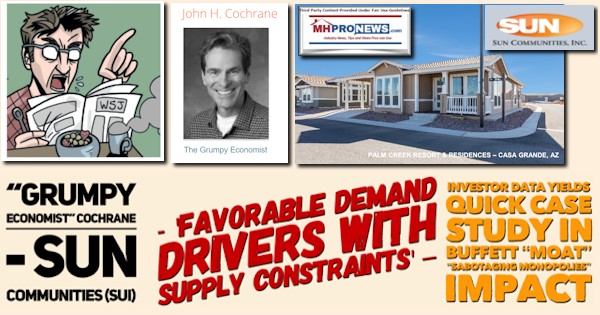
More Third-Party Research About Manufactured Homes
Hold those thoughts for a few moments, and we will briefly pivot toward the arguably related evidence provided by researchers into affordable manufactured housing by Lisa Tyler, Ph.D., and Scholastica “Gay” Cororaton, Certified Business Economist (CBE) for the National Association of Realtors (NAR).
Tyler makes a point that once more evokes the claim by Schmitz and Fettig. Namely, that misinformation is driving much of the policy discussion at the local levels.

Tyler’s peer-reviewed research into such issues earned her a doctoral degree (Ph.D.). Note that Tyler is reportedly the first Ph.D. in years that did her dissertation on a manufactured housing related topic. Wouldn’t you think that the Manufactured Housing Institute would highlight her work? But as will be seen further below, there is no mention on the public side of the MHI website of Tyler.
Next, Scholastica “Gay” Cororaton, CBE for the National Association of Realtors (NAR) demonstrated that financially speaking, the earnings of most renters are higher than most manufactured homeowners. What that means is that tens of millions are paying more to rent than it would cost for them to own or buy a manufactured home.
Cororaton also noted that the evidence debunks concerns about flimsy or flawed construction in manufactured homes, with this point.
The video and report linked below it illustrates the claims made by Cororaton. In fact, part of the video shows a site-built house that is swept away by a tornado in about ten seconds. Meanwhile the same video shows before and after results of hurricanes and tornadoes involving manufactured homes. While some are lost, many survive. Given that entire neighborhoods of conventional houses have been lost to tornadoes, the video proves that manufactured homes are “resilient” as HUD Secretaries Ben Carson and Marcia Fudge have both said.
HUD Secretary Ben Carson, M.D. and Manufactured Housing
There is little doubt that the biggest ‘promoter,’ so to speak, of HUD Code manufactured homes among the 21st century HUD secretaries has been Dr. Ben Carson, M.D. His remarks as prepared in an address to MHI members, as provided by HUD, are shown below.
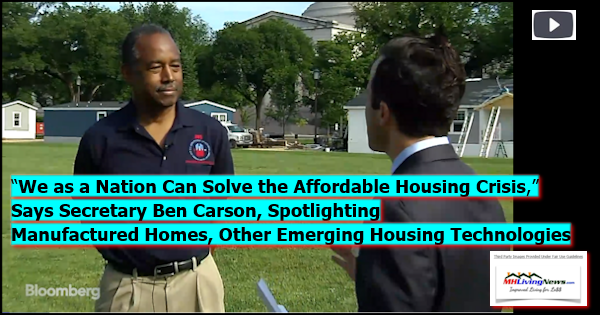
Carson has said similar things in groups outside of manufactured housing, as the statements linked here reveal. That noted, once more, it begs a question. Given that Carson’s comments were made to MHI members, why is it that this speech not found on the public pages of the MHI website? The evidence for that plus the Tyler and Cororaton observations noted above are found in this screen capture.
It should be noted that MHI hired an outside attorney to monitor what our platforms publish. That is per a letter from John Greiner with Graydon Law.
Additionally, a different outside attorney David P. Goch, said something similar to Spencer Roane in a report with that letter linked here. Goch speaking for MHI, said that they monitor what is said about MHI. Two attorneys, plus other evidence linked below, reveal that MHI is well aware of these issues. So too are attorneys and a board member for Berkshire Hathaway.
As that MHLivingNews report demonstrates, Berkshire Hathaway, Clayton Homes, 21st Mortgage Corporation, attorneys associated with, and MHI have been contacted about several allegations that includes charges of violations of antitrust and other laws. Those allegations of lawbreaking will be noted further below. Note none of those parties have not yet responded to our publications regarding those allegations.
Rephrased, while they have the right to remain silent, those allegations at this time stand undisputed via any direct response.
Additionally, when public opportunities to respond or address such issues and their association’s performance were raised, numerous documented cases exist of MHI avoiding a public discussion of these concerns.
https://www.manufacturedhomepronews.com/masthead/4-quick-documented-examples-of-manufactured-housing-institute-leaders-publicly-ducking-out-on-explaining-their-performance-or-lack-thereof-els-howard-walker/
Not least among the evidence of MHI being a hub for collusion that is arguably illegal is the prima facie case of MHI claiming in federal filings, done under penalties of perjury, that asserts that they are working to expand the manufactured home industry.
https://www.manufacturedhomepronews.com/masthead/prima-facie-cases-against-manufactured-housing-institute-richard-a-dick-jennison-tim-williams-21st-mortgage-kevin-clayton-tom-hodges-clayton-homes-et-al/
Those are noted to make this point. It is simply not credible to think that MHI is unaware of these topics, facts, and concerns. Thus, these points arguably underscore the concerns raised by Schmitz and Fettig about sabotaging monopolies working in devious and deceptive ways. Because if MHI were seriously trying to promote and defend their industry, as they claim to represent all segments of manufactured housing, then they would quite naturally refer to third-party research that illustrates these issues.
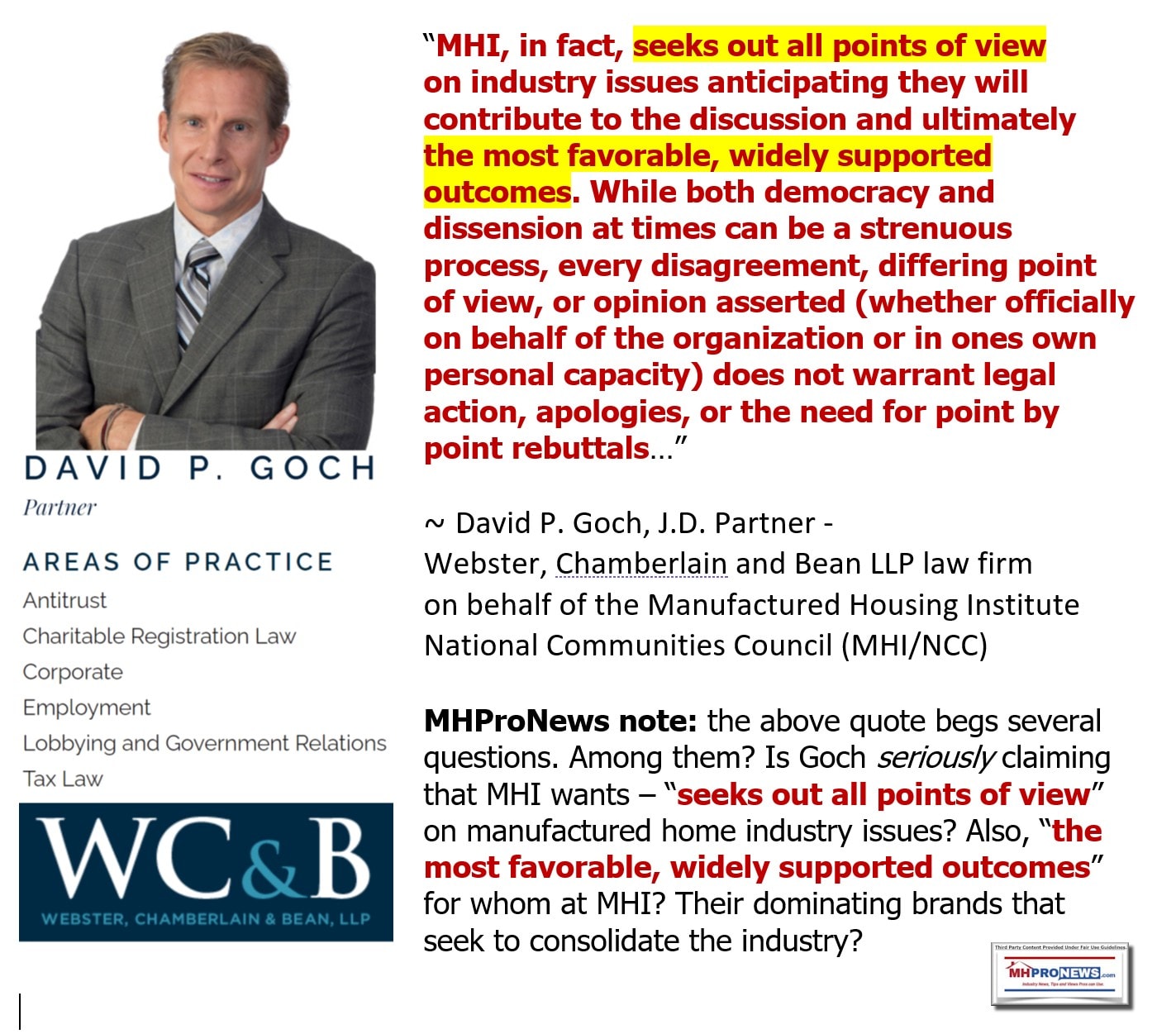
Interim Summary Plus Illustrations
Let’s sum up what we have learned so far. In no particular order of importance are the following from the sources cited herein.
1). The affordable housing crisis has existed for decades.
2). The underlying causes of the affordable housing crisis have not substantially changed in over 50 years. While the rate of homeownership has risen and fallen, it is much the same overall . That suggests that, regardless of political party, Democrat or Republican, the known facts vs. the implemented policies have not moved the needle much. That should obviously mean that the policies have failed.
3). Repeating the same failed policies of the past logically will only lead to a similar outcome in the future.
4). While some politicians have claimed that the rate of homeownership in America is the highest in the world, that is simply not born out by the facts. About 40 nations have a higher rate of homeownership than the U.S., and they are often nations that lower earnings per person than the U.S.
5). Local regulatory barriers are a significant driver of housing costs. Among those barriers are barriers that block the placement of the most proven form of affordable homes in the last 45 years. That would be HUD-Code manufactured homes.


6). Blurring the proper understanding of the proven value of affordable manufactured homes are another cause of the affordable housing crisis. Schmitz and Fettig noted that subsidies are keeping ‘site builders’ more competitive with manufactured homes. Some of what has been occurring the Modular Home Builders Association (MHBA) Executive Director Tom Hardiman has called political payoffs.
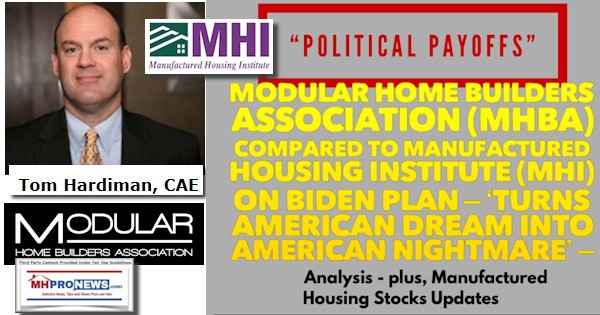
7) Additionally, zoning restrictions are part of that process. Danny Ghorbani, who has served in the manufactured housing industry – for both MHI and MHARR – for some 5 decades pointed out in a recent exclusive interview that zoning boards often have the opponents and competitors of manufactured homes on them.
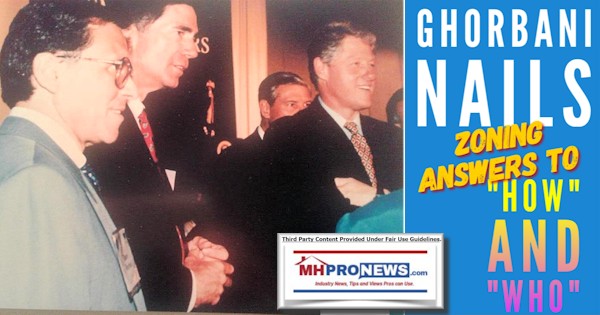
8). What Carson’s quote above insightfully indicated is that if manufactured housing were being used in a more widespread fashion, then household wealth creation would rise. That is because it makes more sense economically for a single person, couple, or family to buy an affordable manufactured home than rent an apartment or other housing.
9). Demonstrably false narratives have been used as excuses to keep site builders building far more costly houses, while more affordable – and greener – manufactured homes are being marginalized. But it is not just the NAHB or HUD (more HUD’s role in this, below) that are causing this harm. There is both indirect and direct evidence that MHI, representing several larger firms, is allowing this to occur. Why? Because it fosters consolidation of the industry.

10). Much of the negative news about manufactured homes routinely can be traced back to firms that are brands involved in MHI.


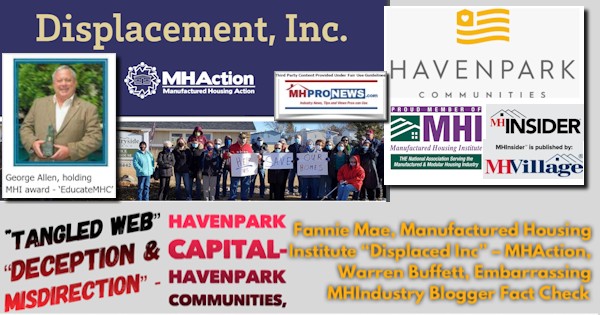
11). Much of this illustrates the ‘sabotage monopolistic’ strategies that have undermined manufactured housing, as well as other lower-cost options to consumers, per Minneapolis Federal Reserve researchers Schmitz and Fettig.
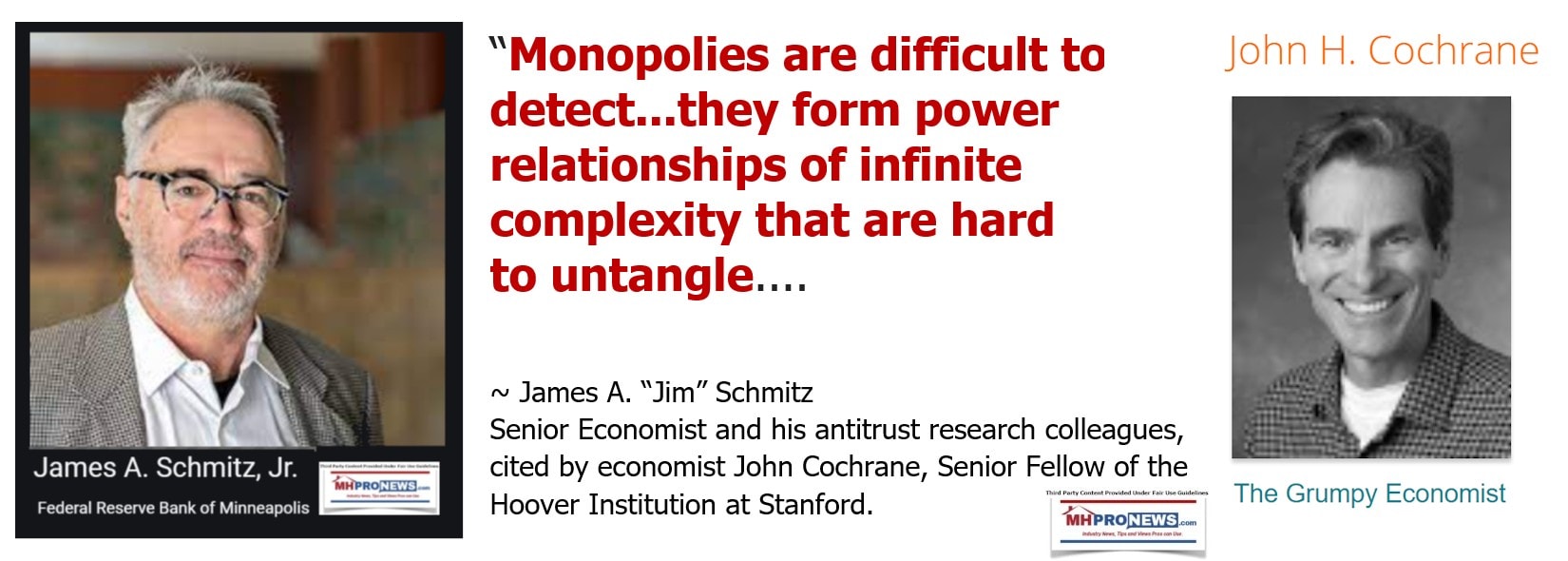
Snapshot and summary reveals a lot of evidence that covers over half a century in this report.
Certainly, this report could have said less. But then this report would have fewer facts and less supporting proof.
In fairness, someone might consider alternative hypothesis that might explain these same fact patterns. For instance. Are the people at MHI, Clayton Homes, Berkshire Hathaway, et al merely inept or uninformed? That hardly seems possible, given the evidence of their education, experience, and the fact that they are hiring outside attorneys – and perhaps others – to monitor what is being said about them.
The behavior of monitoring outside comments is not wrong in itself. But it may buttress the notion that MHI and their dominating brands are behaving in an oddly ineffective fashion and have been for decades. When someone looks at the list of corporate MHI board members and then looks at who is benefiting from this pattern of behavior, a startling fact emerges. Those corporate interests are routinely growing, while much of the balance of the industry is struggling during an affordable housing crisis.
That tees up the next part of this researched report on the underlying causes and possible cures for the affordable housing crisis. A brief look at provisions of federal law will be explored, and will link up related information.
That should be viewed through the lens of the already mentioned Buffett Castle and Moat stratagem.
Then, we will look at recent statements by the Biden White House. Finally, we will do an overall summary and conclusion to what these facts should tell intelligent people seeking solutions instead of mere sound bites that for decades have avoided the obvious solution hiding in plain sight.
The Manufactured Housing Improvement Act of 2000 and the Housing and Economic Recovery Act (HERA) of 2008 “Duty to Serve” Manufactured Housing Provisions with Good Lending
The tragedy of much of what has been outlined so far is this. By widely bipartisan margins, Congress enacted two laws named in the subheading above. Manufactured Housing Improvement Act of 2000 (MHIA or 2000 Reform Law) was signed into law by Democratic President William “Bill” Clinton. Much needed support to provide something like parity for manufactured housing with conventional housing was accomplished in the Housing and Economic Recovery Act (HERA) of 2008. HERA established the Duty to Serve Manufactured Housing, Rural and Underserved Markets. Properly understood, each of those 3 categories ought to involve manufactured homes.
Some 13 years after HERA was enacted, the Duty to Serve (DTS) it is still not properly implemented. DTS are federal mandates for Fannie Mae and Freddie Mac, sometimes called the Government Sponsored Enterprises (GSEs) or Enterprises.
Who says those mandates are not properly implemented? On paper, numbers of professionals, affordable housing advocates, and trade groups. Surprisingly, even the prior DTS manager said as much before exiting his job.
A series of pull-quotes will make the case that DTS has not been properly implemented.
This writer, in federal comments found at this link here on the FHFA website, laid out in detail the facts that demonstrate that DTS is entirely doable, yet is inexplicably not yet in effect.
Let’s start with this from Kevin Clayton, CEO of Berkshire Hathaway-owned Clayton Homes, in comments made to Congress on behalf of MHI.
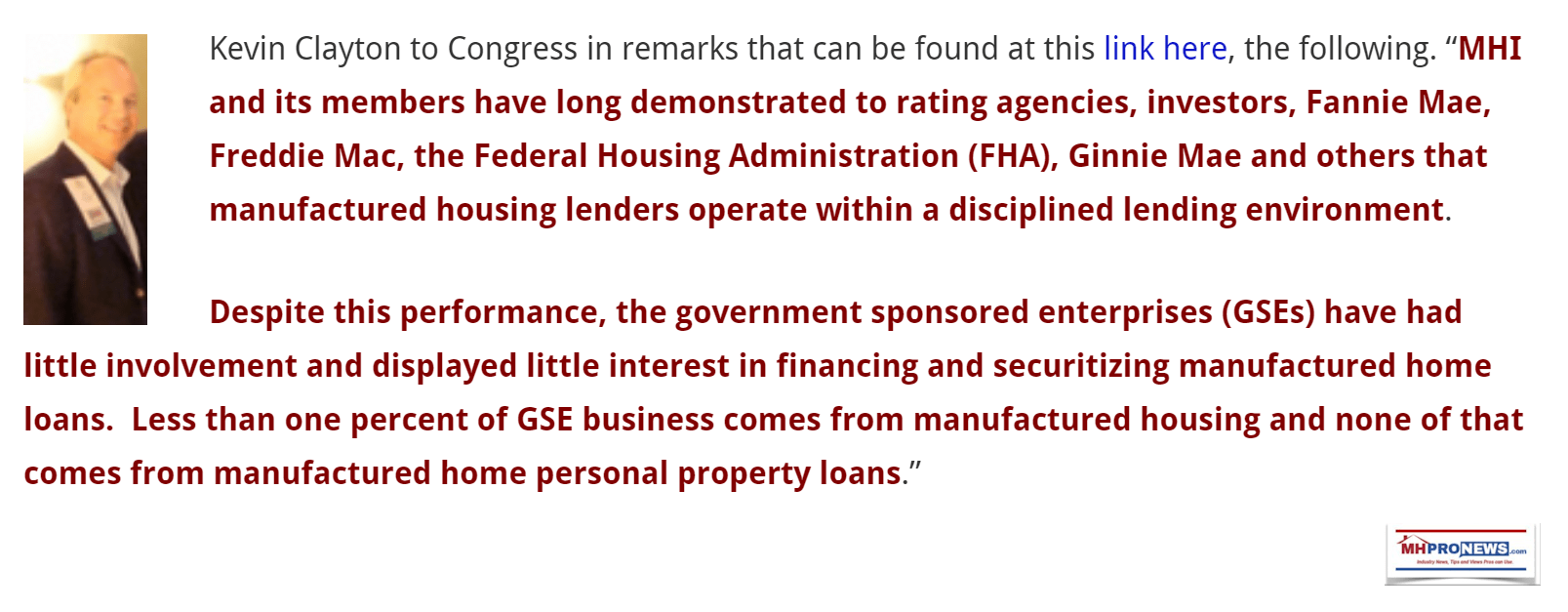
Note that formal testimony to Congress, even when not made under oath, is subject to penalties if it proves to be untruthful.
Doug Ryan, who works in affordable housing programs at Prosperity Now (formerly called CFED), asserted this in comments he submitted to American Banker.
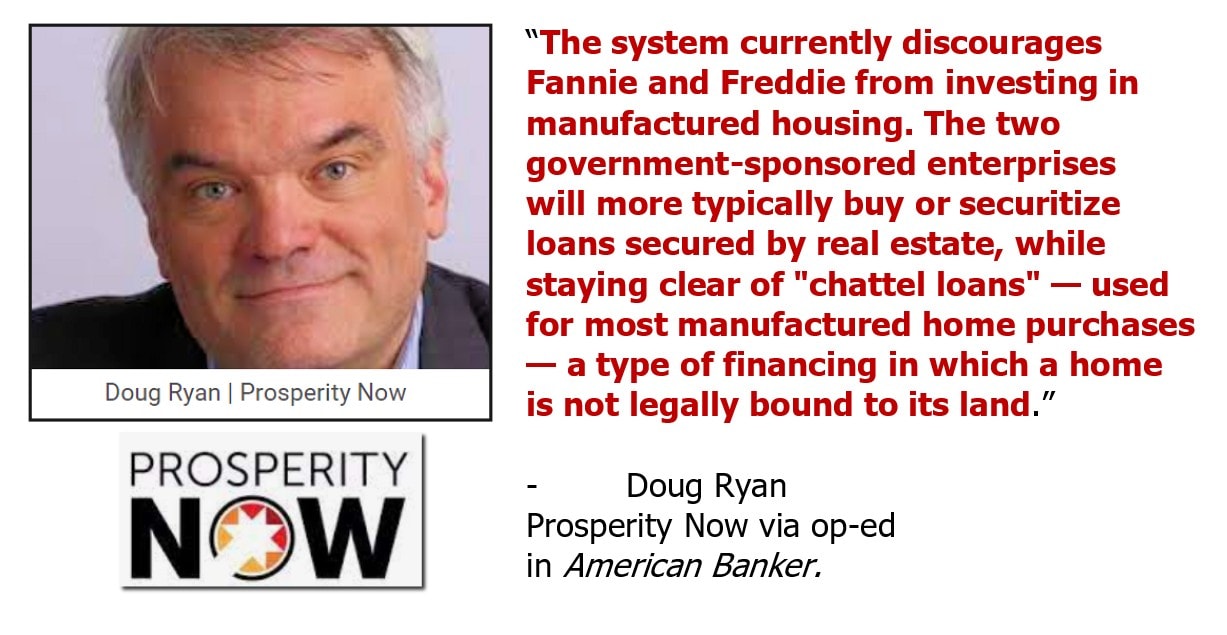
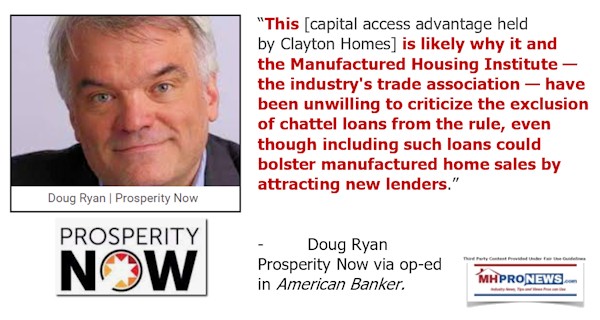
While Lesli Gooch, Ph.D., then an executive vice president, but now the CEO at MHI responded, she denied that there is any monopolization of the market or of financing. But fast-forward to her own comments to the FHFA in 2021, Gooch admitted that there is no progress on DTS.
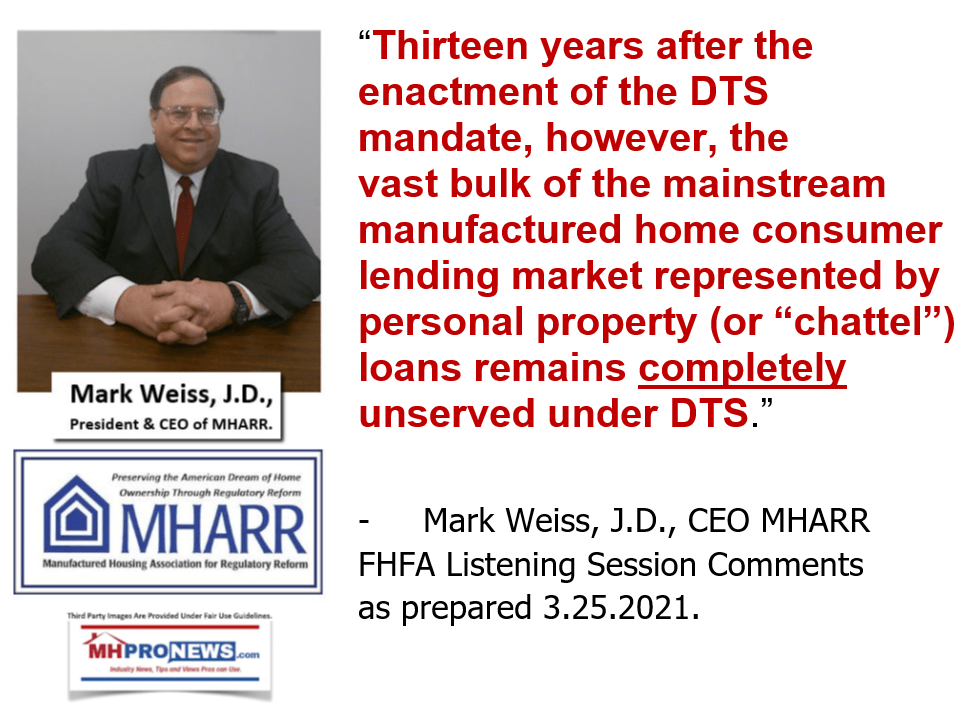
What Gooch did not say is that Tim Williams, President and CEO of Berkshire Hathaway owned 21st Mortgage Corporation frankly – if not surprisingly – admitted to a group of MHI members that he was glad that the DTS pilot project had failed. Neither Williams nor MHI denies that statement was made.
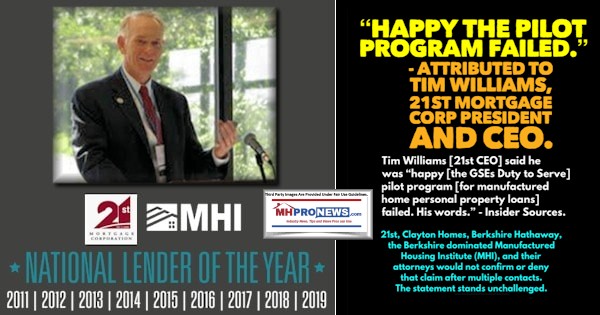
Thus, there is apparent evidence that some key members of MHI are saying one thing, but are apparently satisfied with an entirely different outcome. For reasons like these, Mark Weiss, J.D., President and CEO of the Manufactured Housing Association for Regulatory Reform (MHARR) called the process a sham and a shell game.

MHARR has for years asserted similar concerns to what Ryan said in the quote above.
Instead of pushing for a robust enforcement of DTS, MHI oddly pushed for – and got – Fannie Mae and Freddie Mac to support a ‘new class of manufactured homes’ called “CrossModTM” homes. But after years of hype, and specific concerns raised by not only industry members but also MHBA’s Hardiman, CrossMods today are a proven illusion.

But that illusionary goal has apparently harmed millions of current manufactured home owners. Who says so? The Urban Institute.

What a careful look at the history of statements, letters, and claims made by Warren Buffett, Kevin Clayton, Tim Williams, and their allies/surrogates reveals is this. Buffett said shortly after acquiring Clayton Homes that they would retain those loans on their books. Those loans are profitable. That profit margin is only possible because DTS is not being properly enforced.
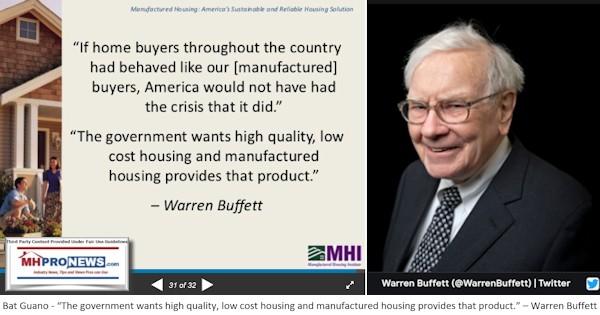
As MHI award winner Marty Lavin periodically observers, pay more attention to what people do than to what they say. And, says Lavin, follow the money trail.


When the money trail is followed, what emerges is a stunning image of apparent corruption that apparently involves federal officials, the GSEs – noting that Fannie and Freddie are still at this time under HERA mandated conservatorship by the Federal Housing Finance Agency (FHFA). Given an opportunity to respond to these evidence-based concerns, the players at Berkshire, Clayton, 21st, and MHI involved are routinely silent. Evidence for the impact of these moves is found in recent federal research published by the Consumer Financial Protection Bureau (CFPB).

The impact of this? DTS has been turned on its head. Once affordable manufactured home land-lease communities have been turned into less affordable place. That has been accomplished by allowing Fannie and Freddie to make low-cost loans with favorable terms available to consolidators that are routinely MHI members.
When these concerns were raised by this writer during an FHFA Listening session, what did FHFA do? An FHFA official cut off the called-in comments.

After some protest, FHFA did post those comments in full, but they also edited the video. Despite Biden campaign pledges for transparency, restated since taking the White House, FHFA has failed to address the coverup concerns raised in the report linked above.
It doesn’t take rocket scientists to realize that coverups often occur precisely when someone or some group has something to hide.
That’s overview and the linked reports are sufficient to make the point that DTS has been thwarted. As MHARR’s Weiss has put it, it is time to investigate.

Next, let’s look at zoning/placement issues. Because the MHIA of 2000 established a mechanism for HUD to specifically override local zoning and placement barriers. Said who? Several sources with knowledge, including MHI, MHARR, and the first administrator of the HUD-Code Office of Manufactured Housing Programs (OMHP), William “Bill” Matchneer, J.D.
Per Matchneer, the notion of “enhanced preemption” of manufactured housing was enacted along with new consumer supports and guarantees. More specifically, “enhanced preemption” was an extension of the original federal preemption made part of the 1974 manufactured housing construction and safety standards. It is called “enhanced preemption” because the 2000 reform law said that preemption was supposed to be “broadly and liberally” construed.
Additionally, as Weiss – involved in the crafting of the 2000 reform law – has said, there is specific language that was added beyond that phrase.
A letter from Democratic lawmakers in 2003 to then HUD Secretary Mel Martinez, during the Bush 43 term of office, made it plain that Weiss interpretation cited above is correct.

Despite all of this evidence, HUD has stubbornly refused to routinely enforce the law. Matchneer said during a conference call that while he personally was involved in some efforts to get the MHIA’s “enhanced preemption” enforced, that HUD’s Office of General Counsel routinely declined to get involved.
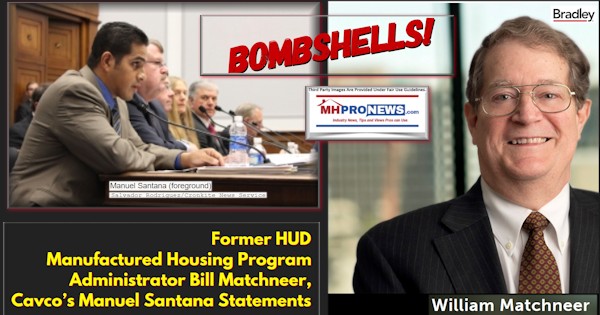
As or more important is the fact that when a Republican Congressional lawmaker questioned new HUD Secretary Marcia Fudge on this issue, she denied HUD’s ability to override local zoning.
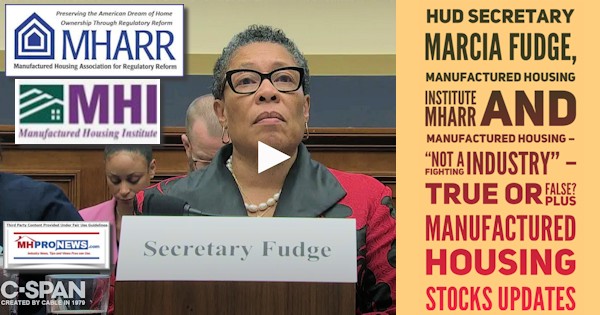
To illustrate how apparently corrupt years of evidence of such matters involving MHI seems to be is this. The report linked above portrayed MHI and that exchanged in a favorable light. Yet, when the video between Secretary Fudge and that Republican lawmaker and its transcript are views, may have been “MHI in Action” but not in an action that was good for most, save consolidators.
When asked by MHProNews about Fudge’s statement, MHARR’s Weiss said that Secretary Fudge was incorrect, and cited law and Biden Administration policies to back his points up.
With those points in mind, we’ll briefly refer readers and researchers to the deep dive into manufactured housing made by Samuel “Sam” Strommen of Knudson Law. Per Strommen, the following.


Given an opportunity to refute, correct or respond to Strommen’s allegation, there was silence from Berkshire, Clayton, 21st, MHI, or their inside and outside attorneys.
Restated, what the above should make clear is this. The allegations those Federal Reserve researchers of a “sabotaging monopoly” in manufactured housing are well-founded. As noted, these points merit being included in their follow-up research, because it is not only conventional housing builders – which includes Clayton Homes – and the NAHB, but also MHI and several of their dominating brands that are involved. It is not only HUD, but the FHFA that are apparently involved.
It is the Biden 22020 campaign website that noted that access is a form of currency in Washington, D.C. MHI, Clayton, and their dominating brands clearly had access to these federal officials in question.
It should be noted that it is unclear if Secretary Carson was briefed on the MHIA and enhanced preemption or not. There is no evidence at this time that he was. But as MHProNews reported, Bryan Montgomery was in the loop on these issues. He arguably was just as problematic in his treatment of manufactured housing and the enhanced preemption issue as Secretary Fudge recently was. It is for that reason that MHProNews editorially opposed Montgomery’s nomination to this role at HUD.
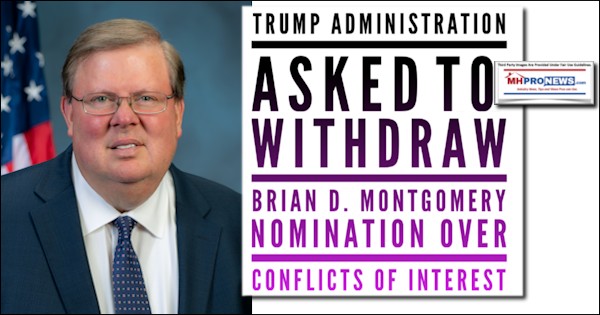
It is also worth mentioning that MHI, when ‘their’ nominee Pam Danner was placed in Matchneer’s prior role as the OMHP administrator, did significant harm to the interests of industry independents. When the Washington Post reported on that issue, MHARR came down clearly in favor of removing Danner. By contrast, MHI’s Gooch danced around it claiming they wanted a broader reorganization.
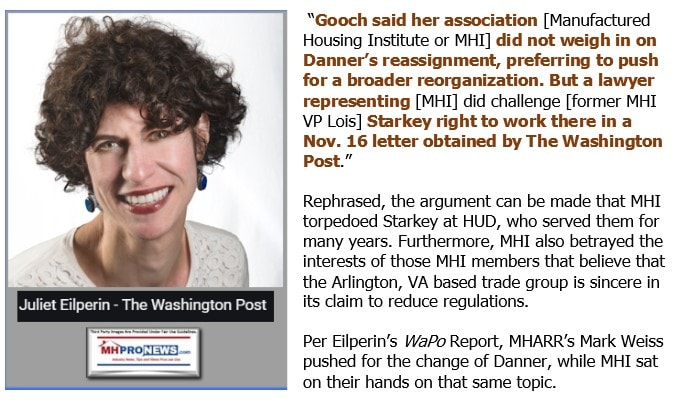
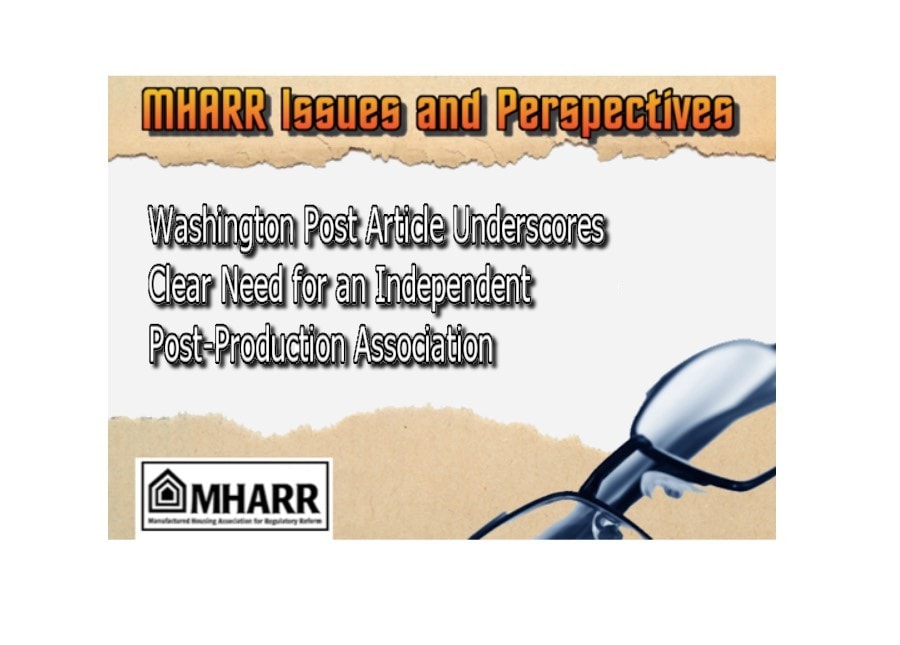
MHARR, with support from other industry pros, was successful in having Danner removed. The same attorney – Goch – was protesting the presence of an ex-MHI employee, Lois Starkey joining HUD. MHI is clearly willing to use attorneys and threats when it seems to suit their own interests. Which makes it appear that MHI is not willing to defend and assert legally the interests of millions of consumers and thousands of industry independents.
MHARR’s Weiss has made clear that they know what federal law says.
What this means is that federal laws are being ignored and twisted in a fashion that puts millions of current homeowners at risk of a bubble bursting. Taxpayers, renters, and manufactured homeowners are all harmed by this pattern of activity.
When carefully examined, the history of this pattern of behavior with respect to affordable housing and manufactured homes should be clear. During the Obama-Biden years alone, Warren Buffett and Bill Gates, among others, clearly had clout with the White House. Why didn’t Buffett, Gates, or other connected professionals push the Obama-Biden administration into enforcing laws that already exist?
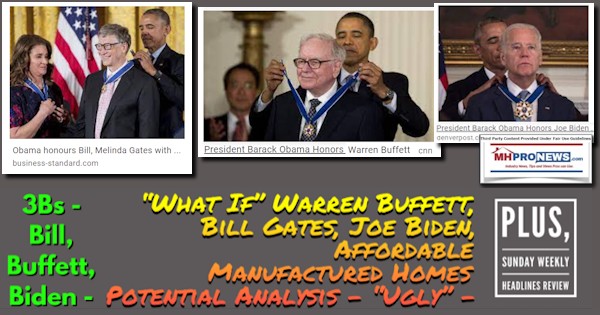
With the above in mind, what follows is almost a footnote. The case can be made that the recent Biden White House statement is window-dressing, a form of paltering. But the reason to include this in this report are several. Because paltering or not, much of what Biden said in his recent comments about the harms caused by a lack of competition are demonstrably true.
So, because this is an often misunderstood issue with millions, the following is worthy of a few more minutes of reading.
The White House/Biden Statements on Harm Caused by Lack of Competition
Someone may agree or disagree with a range of notions about Biden, including his hotly-disputed right to be in the White House. What follows should not be viewed as an endorsement of the man nor his policies, but rather as a reflection of what he said and how it fits into this discussion about the harms caused by various types of monopolization and consolidation of markets by small groups of large brands.
With that in mind, please set aside for the next few minutes any political, election or other concerns. It is the statements themselves that matter here.
What Biden said on July 9, 2021 about the harms caused by a lack of competition is quite fascinating and is on many levels evidence-based. Indeed, Biden’s prepared remarks – likely drafted by staff, as noted above – largely supports the broader points made by Schmitz, Fettig, et al, noted above.
So, let’s first look at several relevant pull quotes from the Biden remarks. Keeping in mind the points above from “Monopolies Inflict Great Harm on Low- and Middle-Income Americans.”
While these are often shown as bullets below, the text is the same as Biden’s remarks, but are not necessarily displayed in the same format as in the original, which can be seen in its entirety at this link here.
- A fair, open, and competitive marketplace has long been a cornerstone of the American economy, while excessive market concentration threatens basic economic liberties, democratic accountability, and the welfare of workers, farmers, small businesses, startups, and consumers.
- The American promise of a broad and sustained prosperity depends on an open and competitive economy. For workers, a competitive marketplace creates more high-quality jobs and the economic freedom to switch jobs or negotiate a higher wage. For small businesses and farmers, it creates more choices among suppliers and major buyers, leading to more take-home income, which they can reinvest in their enterprises. For entrepreneurs, it provides space to experiment, innovate, and pursue the new ideas that have for centuries powered the American economy and improved our quality of life. And for consumers, it means more choices, better service, and lower prices.
- Robust competition is critical to preserving America’s role as the world’s leading economy.
- Yet over the last several decades, as industries have consolidated, competition has weakened in too many markets, denying Americans the benefits of an open economy and widening racial, income, and wealth inequality. Federal Government inaction has contributed to these problems, with workers, farmers, small businesses, and consumers paying the price.
Let’s pause there. As prior reports here and on MHProNews have illustrated, much of this is demonstrably true. Both Democratic and Republican administrations for years have failed to properly enforce antitrust laws. This graphic below illustrates that point.
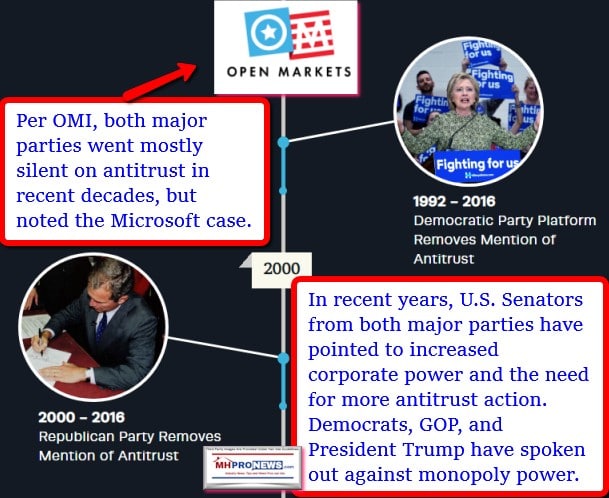

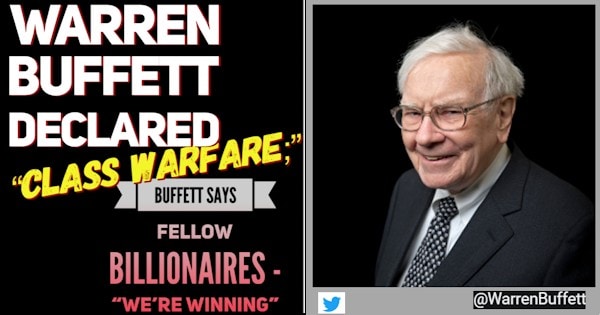
But that also ironically means that Biden is pointing the finger at himself and former President Barack Obama. After all, much of this consolidation occurred during the 8 years that Obama-Biden held office.
It is an open question if more would have been accomplished if President Trump had 4 more consecutive years in office. What is known is that antitrust efforts were launched against Google and Facebook while President Trump held the White House. It is also an open question if Secretary Carson is involved in the apparent game playing at HUD or not. If a federal investigation into these issues are done, Dr. Carson and several others named in this report ought to be called in and questioned under oath.
That said, let’s return to some points made by Biden’s comments. Because, at a minimum, these comments can now be used with or by Democrats who hold the Congress and various branches of the government. What are they going to say? It is another Democrat – posturing or not – who made these statements and public promises. That also means that Republicans can use these comments, because it is a Democrat sitting in the White House who claims he will use federal power to reign in those who helped put Biden-Harris into office.
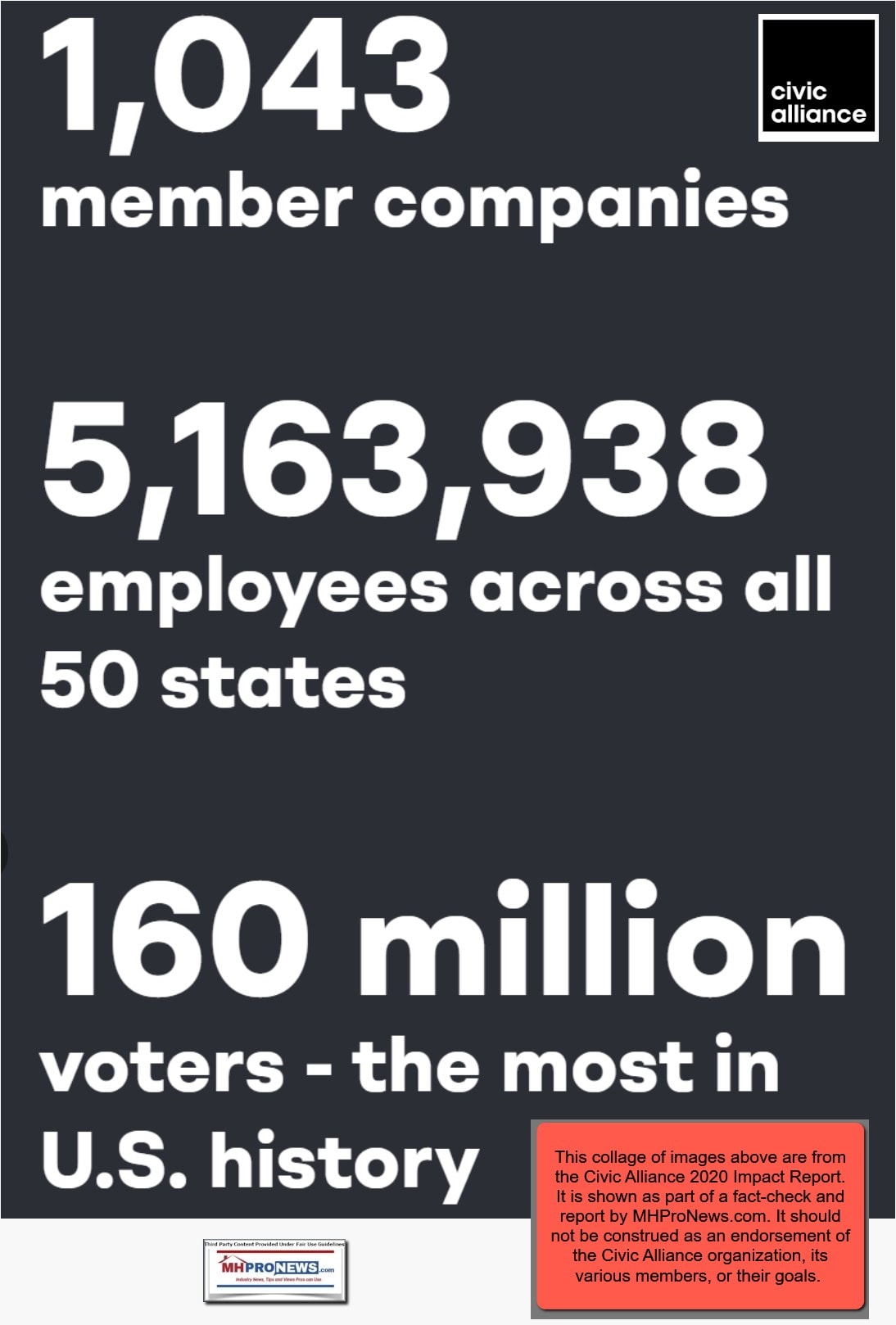


Back to the Biden EO on antitrust, pro-competition and reversing the trends of consolidation of the economy.
- Consolidation has increased the power of corporate employers, making it harder for workers to bargain for higher wages and better work conditions. Powerful companies require workers to sign non-compete agreements that restrict their ability to change jobs. And, while many occupational licenses are critical to increasing wages for workers and especially workers of color, some overly-restrictive occupational licensing requirements can impede workers’ ability to find jobs and to move between States.
…[Skipping ahead – highlighting added by MHLivingNews.].
- The problem of economic consolidation now spans these sectors and many others, endangering our ability to rebuild and emerge from the coronavirus disease 2019 (COVID-19) pandemic with a vibrant, innovative, and growing economy. Meanwhile, the United States faces new challenges to its economic standing in the world, including unfair competitive pressures from foreign monopolies and firms that are state-owned or state-sponsored, or whose market power is directly supported by foreign governments.
- We must act now to reverse these dangerous trends, which constrain the growth and dynamism of our economy, impair the creation of high-quality jobs, and threaten America’s economic standing in the world.
- This order affirms that it is the policy of my Administration to enforce the antitrust laws to combat the excessive concentration of industry, the abuses of market power, and the harmful effects of monopoly and monopsony — especially as these issues arise in labor markets, agricultural markets, Internet platform industries, healthcare markets (including insurance, hospital, and prescription drug markets), repair markets, and United States markets directly affected by foreign cartel activity.
Note the recent reports on MHLivingNews that illustrates several of the evidence-based claims in the statement above. Keep in mind that this may be “paltering,” a mix of truth that is deployed along with spin or other deceptive tactics that aims to mislead the reader or listener.
- It is also the policy of my Administration to enforce the antitrust laws to meet the challenges posed by new industries and technologies…
- …Whereas decades of industry consolidation have often led to excessive market concentration, this order reaffirms that the United States retains the authority to challenge transactions whose previous consummation was in violation of the Sherman Antitrust Act (26 Stat. 209, 15 U.S.C. 1 et seq.) (Sherman Act), the Clayton Antitrust Act (Public Law 63-212, 38 Stat. 730, 15 U.S.C. 12 et seq.) (Clayton Act), or other laws. See15 U.S.C. 18; Standard Oil Co. v. United States, 221 U.S. 1 (1911).
- …This order reasserts as United States policy that the answer to the rising power of foreign monopolies and cartels is not the tolerance of domestic monopolization, but rather the promotion of competition and innovation by firms small and large, at home and worldwide.
Let’s pause there for a few moments. If the Biden White House is serious, and if they are serious about creating more affordable housing via the free market too, then the report by Samuel “Sam” Strommen at Knudson Law should be required reading in much of Washington, D.C. as well as in every statehouse because Strommen has carefully documented with dozens of footnotes the kinds of concerns raised in this report.
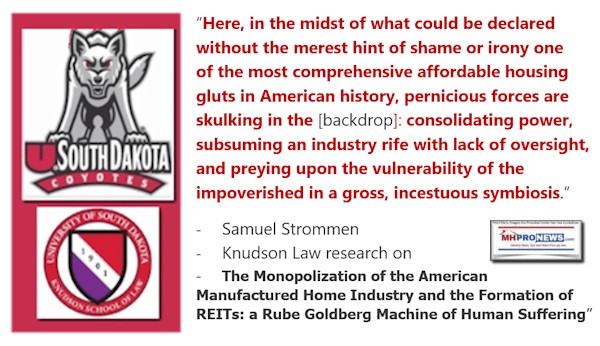
That noted, back to the Biden EO. While most if not all of this is on the surface accurate, it is a question if federal bureaucracy will do what Biden is pledging. But even if they have no intention to do this, the statements are a useful roadmap for why this should have been done decades ago. They are also now – at least officially – federal policy. The highlighting is added by MHLivingNews.
Sec. 2. The Statutory Basis of a Whole-of-Government Competition Policy.
(a) The antitrust laws, including the Sherman Act, the Clayton Act, and the Federal Trade Commission Act (Public Law 63-203, 38 Stat. 717, 15 U.S.C. 41 et seq.), are a first line of defense against the monopolization of the American economy.
(b) The antitrust laws reflect an underlying policy favoring competition that transcends those particular enactments. As the Supreme Court has stated, for instance, the Sherman Act “rests on the premise that the unrestrained interaction of competitive forces will yield the best allocation of our economic resources, the lowest prices, the highest quality and the greatest material progress, while at the same time providing an environment conducive to the preservation of our democratic political and social institutions.” Northern Pac. Ry. Co. v. United States, 356 U.S. 1, 4 (1958).
(c) Consistent with these broader policies, and in addition to the traditional antitrust laws, the Congress has also enacted industry-specific fair competition and anti-monopolization laws that often provide additional protections. Such enactments include…
…and the Dodd-Frank Wall Street Reform and Consumer Protection Act (Public Law 111-203, 124 Stat. 1376) (Dodd-Frank Act).
(d) These statutes independently charge a number of executive departments and agencies (agencies) to protect conditions of fair competition in one or more ways, including by:
(i) policing unfair, deceptive, and abusive business practices;
(ii) resisting consolidation and promoting competition within industries through the independent oversight of mergers, acquisitions, and joint ventures;
(iii) promulgating rules that promote competition, including the market entry of new competitors; and
(iv) promoting market transparency through compelled disclosure of information.
(e) The agencies that administer such or similar authorities include the Department of the Treasury, the Department of Agriculture, the Department of Health and Human Services, the Department of Transportation, the Federal Reserve System, the Federal Trade Commission (FTC), the Securities and Exchange Commission, the Federal Deposit Insurance Corporation, the Federal Communications Commission, the Federal Maritime Commission, the Commodity Futures Trading Commission, the Federal Energy Regulatory Commission, the Consumer Financial Protection Bureau, and the Surface Transportation Board.
(f) Agencies can influence the conditions of competition through their exercise of regulatory authority or through the procurement process. See 41 U.S.C. 1705.
(g) This order recognizes that a whole-of-government approach is necessary to address overconcentration, monopolization, and unfair competition in the American economy. Such an approach is supported by existing statutory mandates. Agencies can and should further the polices set forth in section 1 of this order by, among other things, adopting pro?competitive regulations and approaches to procurement and spending, and by rescinding regulations that create unnecessary barriers to entry that stifle competition.
Sec. 3. Agency Cooperation in Oversight, Investigation, and Remedies.
(a) The Congress frequently has created overlapping agency jurisdiction in the policing of anticompetitive conduct and the oversight of mergers. It is the policy of my Administration that, when agencies have overlapping jurisdiction, they should endeavor to cooperate fully in the exercise of their oversight authority, to benefit from the respective expertise of the agencies and to improve Government efficiency.
(b) Where there is overlapping jurisdiction over particular cases, conduct, transactions, or industries, agencies are encouraged to coordinate their efforts, as appropriate and consistent with applicable law, with respect to:
(i) the investigation of conduct potentially harmful to competition;
(ii) the oversight of proposed mergers, acquisitions, and joint ventures; and
(iii) the design, execution, and oversight of remedies.
(c) The means of cooperation in cases of overlapping jurisdiction should include, as appropriate and consistent with applicable law:
(i) sharing relevant information and industry data;
(ii) in the case of major transactions, soliciting and giving significant consideration to the views of the Attorney General or the Chair of the FTC, as applicable; and
(iii) cooperating with any concurrent Department of Justice or FTC oversight activities under the Sherman Act or Clayton Act.
(d) Nothing in subsections (a) through (c) of this section shall be construed to suggest that the statutory standard applied by an agency, or its independent assessment under that standard, should be displaced or substituted by the judgment of the Attorney General or the Chair of the FTC. When their views are solicited, the Attorney General and the Chair of the FTC are encouraged to provide a response to the agency in time for the agency to consider it in advance of any statutory deadline for agency action.
Sec. 4. The White House Competition Council.
(a) There is established a White House Competition Council (Council) within the Executive Office of the President.
(b) The Council shall coordinate, promote, and advance Federal Government efforts to address overconcentration, monopolization, and unfair competition in or directly affecting the American economy, including efforts to:
(i) implement the administrative actions identified in this order;
(ii) develop procedures and best practices for agency cooperation and coordination on matters of overlapping jurisdiction, as described in section 3 of this order;
(iii) identify and advance any additional administrative actions necessary to further the policies set forth in section 1 of this order; and
(iv) identify any potential legislative changes necessary to further the policies set forth in section 1 of this order.
(c) The Council shall work across agencies to provide a coordinated response to overconcentration, monopolization, and unfair competition in or directly affecting the American economy.
…
Sec. 5. Further Agency Responsibilities.
(a) The heads of all agencies shall consider using their authorities to further the policies set forth in section 1 of this order, with particular attention to…
(b) The Attorney General, the Chair of the FTC, and the heads of other agencies with authority to enforce the Clayton Act are encouraged to enforce the antitrust laws fairly and vigorously.
(c) To address the consolidation of industry in many markets across the economy, as described in section 1 of this order, the Attorney General and the Chair of the FTC are encouraged to review the horizontal and vertical merger guidelines and consider whether to revise those guidelines.
…
(f) To better protect workers from wage collusion, the Attorney General and the Chair of the FTC are encouraged to consider whether to revise the Antitrust Guidance for Human Resource Professionals of October 2016.
…
(vi) unfair tying practices or exclusionary practices in the brokerage or listing of real estate; and
(vii) any other unfair industry-specific practices that substantially inhibit competition.
…
Sec. 6. General Provisions.
(a) This order shall be implemented consistent with applicable law and subject to the availability of appropriations.
(b) Where not already specified, independent agencies are encouraged to comply with the requirements of this order.
…
Let’s note that there are provisions in the above that may be considered as an ‘out’ clause for public officials, noted in Section 6. That said, the entire EO with added links based on related reports are found linked here.
The Council shall work across agencies to provide a coordinated response to overconcentration, monopolization, and unfair competition in or directly affecting the American economy.
MHLN
Meaning, it may all be one more head-fake to voters, not unlike the affordable housing crisis.
Closing Summary, Conclusion and the Cure Hiding in Plain Sight
It is no secret the monopolies in their various forms harm smaller businesses. That has been known for centuries. It is also no secret, as Schmitz and Fettig noted, that federal officials can de facto be colluding with private interests in order to foster monopolistic advantages. That noted, it may not take long to see if the Biden Administration is just posturing or serious.
How so? Because there are several apparent examples found in manufactured housing today that demonstrate that the manufactured housing industry has been manipulated in ways that the Biden EO claims will be fixed. The industry has been manipulated to the harm of consumers for decades, so says Schmitz and Fettig. But ironically, the federal research cited above from HUD obliquely makes the same point by implication.
There appears to be a growing – at least on paper – consensus of what should have been obvious. When a few control or dominate a market, it harms most of those involved. Much of what Biden said also happens to support prior research by various economists and researchers that was previously shared by MHLivingNews and on our MHProNews sister site.
With permission from the WND Newsroom, is the following.
The solution to Big Tech and the oligarchs
Anyone who thinks Big Tech will be reined in by regulations has not been paying close attention. The following cases exposed years of documented corporate, regulatory and accounting failures. They spotlight massive corruption and mainstream media misses.
- Enron
· Theranos
· WorldCom
· VW “Diesel-Gate”
· Solyndra
· Bernard “Bernie” Madoff
· WeWork
· Lehman Brothers
· Fannie Mae, Freddie Mac (Government Sponsored Enterprises/GSEs).
Collectively, that list involved hundreds of billions of dollars in losses by investors. Various types of fraud, corruption and deception occurred. Because taxpayers and the broader economy were impacted by Lehman Brothers and GSEs housing-finance scandals, those cost Americans trillions of dollars.
John Kenneth Galbraith said: “Regulatory bodies, like the people who comprise them … become, with some exceptions, either an arm of the industry they are regulating or senile.” Bingo.
Modern robber barons are dominating information and capital. Cold Fusion’s documentary about the Theranos’ scandal observed: “It’s the illusionary effect where if you repeat a lie enough times people start to believe it, especially if you have credible names surrounding the product.”
Problematic products are from corrupt companies.
Theranos’ Elizabeth Holmes is shown with then Vice President Joe Biden and President Barack Obama. In the massive Enron scandal, Ken Lay and Jeff Skilling are shown with then President George W. Bush (R). Those establishment politicians are sufficient to make the point of the “illusionary effect” of “repeating a big lie enough times” when “credible names” are involved.
Harry Markopolos and his colleagues spent years trying to get public officials and mainstream media to expose the massive Bernie Madoff fraud they knew existed. Forbes says Madoff losses may have exceeded $50 billion.
Other regulatory failures are hiding in plain sight. The New York Times quoted Warren Buffett: “There’s class warfare, all right, but it’s my class, the rich class, that’s making war, and we’re winning.”
Buffett’s “class” profited wildly in the 2008 and 2020 economic upheavals. How? CNBC quoted billionaire Bill Gates: “I didn’t even want to meet Warren because I thought, ‘Hey this guy buys and sells things, and so he found imperfections in terms of markets, that’s not value added to society, that’s a zero-sum game that is almost parasitic.'”
The CDC defines parasitic: “A parasite is an organism that lives on or in a host organism and gets its food from or at the expense of its host.”
Buffett said, “The most important thing for me is figuring out how big a moat there is around a business. What I would love, of course, is a big castle and a big moat with piranhas and crocodiles.”
When carefully examined, these oligarchs and their businesses employ “parasitic” “moat” and “sabotage monopoly” methods. They create a slow-motion monopoly of various markets. Experts like James Schmitz say monopolies “inflict great harm on low- and middle-income Americans.”
The solution? Enforce existing laws. Break these pernicious giants up. They cause social, economic and moral harm. Once broken up, watch the economy and America soar.
– By L. A. “Tony” Kovach
###
The founders of America fought a battle against not just the British crown, but, by extension, the monopolists who were supporting and benefiting from English monopolies.
Schmitz and Fettig are not the only ones who have railed against the problems caused by monopolization. The answer is not “to regulate” them. It is increasingly apparent that regulatory agencies routinely end up benefiting larger brands.
While the example is outside of manufactured housing, the assertion by Robert F. Kennedy, Jr., J.D., that federal regulators are mere “sock puppets” for big pharma is an echo of Roth’s quote above.
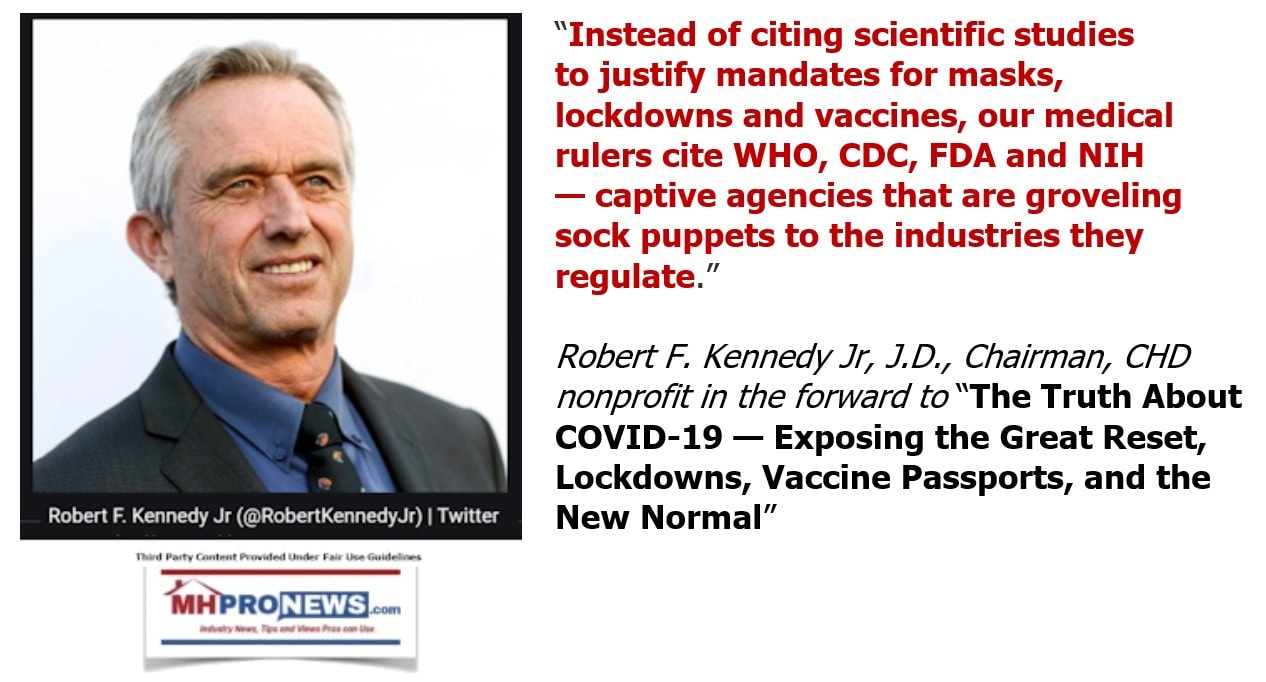
Federal law could be brought to bear to break up not only tech giants, but also companies like Berkshire.
Additionally, if Strommen’s assertions and those of Schmitz and Fettig are carefully examined, laws are being broken inside and outside of manufactured housing. Those involved should be given due process of law while they are prosecuted for the benefit of citizens who have been harmed.
That means that state laws are also being violated. If federal officials fail to act, state officials could do so.
An executive summary of this report is planned for the days ahead. But it will link back to this research, to illustrate the vexing but evidence-rich quality of the information. Until that executive summary is published, these points should be kept in mind.
- Per federal sources, there are some 54 years of history covered by research that point to routinely the same problems as the cause for the affordable housing crisis.
- Zoning and finance are near the heart these issues.
- HUD-Code manufactured homes are the most proven form of affordable housing in America.
- HUD-Code manufactured homes defy the stereotypes, per third party research.
- Manufactured homes have been documented by research as appreciating side-by-side with conventional housing.
- Almost everyone is harmed by this pattern, save builders who are often members of the NAHB and MHI insiders who are more focused on consolidation than they are on industry growth.
- If there is a silver lining to this dark cloud it is this. Laws to fix this mess already exist. Where laws have been broken, the apparent lawbreakers should be investigated and brought to justice.
- For those who think that this is too big to believe, just consider the examples of prior scandals that escaped federal attention in the 21st century alone, listed above. Well known examples are Enron, WorldCom, Madoff, and Theranos.

- Paltering, promises, and a play for time while insiders and their political cronies benefit are near the heart of how this has occurred.
- Those connected individuals often have massive influence with mainstream media and big tech. Meaning, the reasons why this has not been exposed before can be traced back to the financial, information, and political clout of those involved.
If citizens are serious about solving affordable housing, then research like this is part of the solution. Without understanding the decades of pattern and the apparent ways that this has occurred for so long, all that can be expected is more of the same.



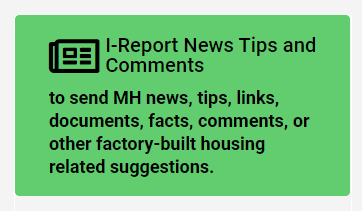

We lay out the facts and insights that others are too lazy, agenda-driven, or otherwise uninformed to do. That’s what makes our sister site and this location the runaway leaders for authentic information about affordable housing in general, the politics behind the problems, and manufactured homes specifically. That’s a wrap on this installment of “News through the lens of manufactured homes and factory-built housing” © where “We Provide, You Decide.” © ## (Affordable housing, manufactured homes, reports, fact-checks, analysis, and commentary. Third-party images or content are provided under fair use guidelines for media.) (See Related Reports, further below. Text/image boxes often are hot-linked to other reports that can be access by clicking on them.)
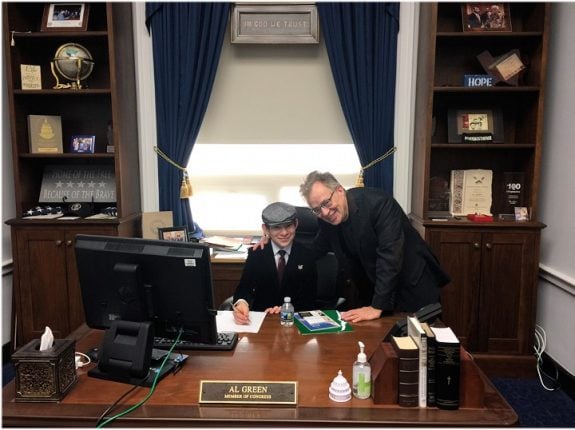
By L.A. “Tony” Kovach – for MHLivingNews.com.
Tony earned a journalism scholarship and earned numerous awards in history and in manufactured housing. For example, he earned the prestigious Lottinville Award in history from the University of Oklahoma, where he studied history and business management. He’s a managing member and co-founder of LifeStyle Factory Homes, LLC, the parent company to MHProNews, and MHLivingNews.com. This article reflects the LLC’s and/or the writer’s position, and may or may not reflect the views of sponsors or supporters.
Connect on LinkedIn: http://www.linkedin.com/in/latonykovach
Recent and Related Reports:
The text/image boxes below are linked to other reports, which can be accessed by clicking on them.


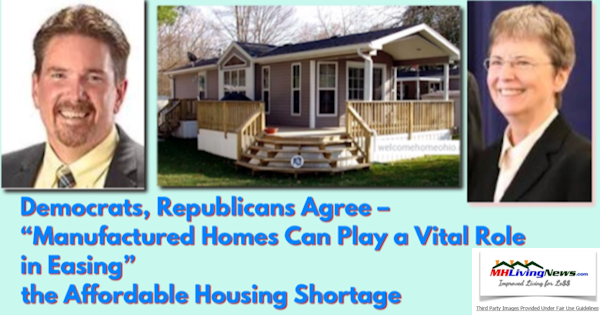

 manufacturedhomelivingnews.com Manufactured Home Living News
manufacturedhomelivingnews.com Manufactured Home Living News

